













8

















How to Hunt Alabama’s Rut . . . . . . . . . . . . . . . 8 by John E. Phillips
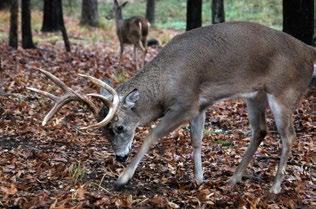

Fishing Low Tide - Dead of Winter, Low Water Inshore 12 by Capt. Bobby Abruscato
All about Rabbits and How to Hunt Them 16 by David Strickland
Best Fishing Trips for January 22 by Frank Sargeant
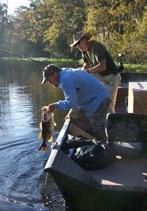
How to Build a Custom AR-15 Rifle 26 by Josh Honeycutt
Boost Your Cell Signal 30 by Ed Mashburn
How Long Do Fish Last in the Freezer? 32 by David Thornton
Land Loan Interest Rate Update 35 by Great Days Outdoors Staff
How to Fly with a Gun 36 by Josh Honeycutt
Choosing Best Bass Fishing Rods For Different Fishing Styles . . . . . . . . . . . . . . . . 42 by Frank Sargeant
Forward-Facing Sonar Can Improve Your Bass Fishing 44 by John E. Phillips
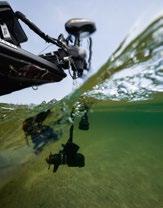
Best Hunting Trips for January 48 by Josh Honeycutt
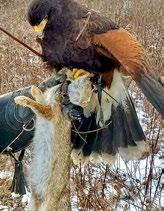
Choosing the Best Pond Aeration System 50 by William Kendy
Deciding on the Best Bass Boats for 2023 54 by David Strickland
Best Bets 6 by William Kendy
Camphouse Kitchen . . . . . . . . . . . . . . . . . . . 58 by Hank Shaw
New & Cool Gear for Outdoorsmen 60 by William Kendy
From the Commissioner . . . . . . . . . . . . . . . . 62 by Chris Blakenship
From the Director 64 by Charles Sykes
Paddle Fishing . . . . . . . . . . . . . . . . . . . . . . 66 by Ed Mashburn
Coastal Outlook . . . . . . . . . . . . . . . . . . . . . 68 by Chris Vecsey
Pier & Shore 70 by David Thornton
Regional Freshwater . . . . . . . . . . . . . . . . . . . 72 by Ed Mashburn
Prime Feeding Times, Moon, Sun, and Tide Charts . . . . . . . . . . . . . . . . . . . . . 76
Pensacola Motorsports Trophy Room . . . . . . . 80
Great Days Kids Corner 82 Fishing Tips 85 by William Kendy
A Great Day Outdoors . . . . . . . . . . . . . . . . . . 86 by Jim Mize
•



multiple large, trophy managed lakes
• Network of large, year-round food plots with shooting houses

• Duck ponds with blinds
• Miles of paved or improved internal roads
• 2 custom lodges
• The Soggy Bottom Lodge sleeps up to 18 with 3 expansive bedroom suites, en suite bathrooms, a commercial kitchen, an open dining room, game room, and den, and just outside is an outdoor kitchen and dining area that can seat up to 40
• Shack 33 features 7 guest bedrooms and 39 beds, a private master suite with spa, commercial kitchen, dining area for 40+, and a game room with bar. The massive porch seats 80+ and has a hibachi grill, flat top, a large built-in grill and fryer, and outdoor fireplaces
• Other amenities include an event pavilion, 8.75+/- miles of game fencing, 20+/- acre breeder pen, equipment barns, feed barn, concert stage, multiple shooting ranges & courses, continental pheasant shoot tower, and diverse, merchantable timber throughout including pine plantations and scenic hardwood, contributing to its significant conservation easement opportunities.
These are our top targets for hunters and fishermen this month!
BY WILLIAM KENDYNews flash. Weather changes. What you plan for in terms of rain and temperature may or may not work out.
If you want to stay comfortable in the outdoors in January, be it hunting or fishing offshore, inshore or in freshwater you need to equip and dress appropriately.

Wear rain gear that is waterproof, windproof and breathable.
For clothing, the key word is “layering”. Start with a baseline layer, add a medium layer and then an outer layer. Make sure that your baseline layer “wicks” moisture away from your skin and your mid layer and outer layer also “breathe”, allowing moisture to escape while retaining heat. The outer layer, whether insulated or not, serves as a shield against wind and rain.
If it gets hotter, shed layers. It’s better to have what you need than to need what you don’t have.
Those is the know say that speckled trout will be in deep water but that term is relative to the water you are fishing.
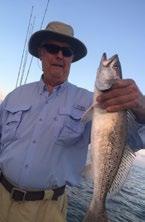
Mobile based Captain and guide Patric Garmeson says that in waters such as Mobile Bay, “deep” water may mean anything from a 50-foot-deep canal or river to a 10-foot-deep cut or canal in a bayou.
Best tackle is a 7’ to 7’ 6 `` inch medium action baitcasting or spinning rod with a medium to fast tip strung with 20-pound braid and a 20-pound fluorocarbon leader with a ¼ to three-ounce jig head.
For the jigs, in a pecking order, Garmeson uses the Lil Slick first, then a lure like the Betts 3 Split Tail or the H & H Sparkle Beetle followed by a paddletail or curly tail plastic bait.
See this month’s Fishing Tips for more advice on winter spec fishing.
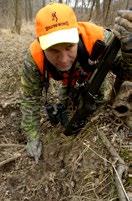
Urine breaks down to ammonia which is molecular and light and it easily drifts in the wind. Whitetails will take a whiff and come to check it out. So going potty by your stand isn’t such a bad idea.
Escape from the crowd. As the season progresses and hunting pressure increases some bucks will become more nocturnal and seek out heavy and remote areas. Hunt them.
Having said that, swales, fence rows, wetlands and other small brushy type plots often are overlooked and may be the “hidey hole” for a buck.
Pay attention to the does. If the rut is on sex crazy bucks will be pursuing does and this causes them to be a bit goofy and break their patterns.
This is a biggie. Monitor the wind and use it to your advantage.
Sit tight on stand from 10:00-1:00. Let other hunters going for lunch move the deer…hopefully to you.
877.314.1237

If you understand what causes the rut, when the rut occurs in various sections of Alabama, and what bucks do during the rut, you can increase your odds for bagging a mature whitetail this year. Of course, all across the U.S. and even in Alabama, rutting times are different. As many myths exist about the whitetails’ mating season as there are proven scientific facts. To determine what the rut means to Alabama deer hunters and how to hunt the rut more effectively, we reached out to wildlife scientists and top deer hunters to share their tactics.

Dr. Karl Miller,is a professor at the University of Georgia’s Deer Lab., “To become a trophy, a buck must be at least 3-1/2 years old. The best place to take a trophy buck is where you find the fewest hunters. During the rut, the trophy buck will make scrapes and freshen-up those scrapes in hopes of attracting a doe he can breed. If he’s not bothered with a lot of hunting pressure, he’ll check these scrapes even in daylight hours during the rut,” Miller said.
When hunting a trophy buck during the rut, remember he’s probably expand-
ed his home range to locate more estrous does and may expose himself more often during daylight hours. So:
* Pass Up Taking Little Bucks: “Once the dominant buck expands his home range, he may cross land he hasn’t frequented before, exposing himself to more hunters searching for trophy bucks,” Miller reported. “When hunting deer in the rut, I’ll let little bucks pass by in hopes that I’ll spot a trophy buck that’s expanding his territory. Since few hunters are willing to let little bucks pass, competition for the trophy animals often is much less.”
* Learn about the Importance of “Dominant Buck Urine”: Many hunters think that sprinkling the urine of a doe in estrus will draw a rutting buck to within gun range.
“The only way to tell if a doe is in estrus is to put her in a pen with a buck. If the buck doesn’t mount the doe, she’s not. If the buck mounts her, then she’s in estrus. Then you can collect estrous urine, but that’s a wild guess at best,” Miller explained.
“A better buck attractant may be the urine of a dominant buck, which is differ-
Alabama’s rut is a productive time to take a trophy buck.
ent from other bucks in the herd. Only one dominant buck lives in a specific area. A hunter may collect the urine of a dominant buck killed elsewhere and sprinkle some of that dominant-buck urine in the scrape of the trophy buck he’s trying to hunt to bring the trophy buck to that scrape more often. The trophy buck may feel he’s being challenged by another dominant deer that’s moved into his region.”
* Hunt Where Does Are: Hunt the travel trails where you’ve seen nothing but does. Many folks don’t realize that does actually start, continue and end the rut. Bucks are searching for estrous does. However, although bucks are ready to breed doesn’t mean that the does are ready. Often, does will stay bedded-down when they see a buck coming to avoid him.
At the beginning of the rut, the best place to look for a buck is on the downwind side of green fields where you’ve seen numbers of does throughout the season. Bucks often will circle downwind of a green field, testing the air to see if an estrous doe’s out on the green field before exposing themselves. Search for dim deer trails 25 - 100 yards off a green field’s edges. A buck often will come in from the downwind side of a green field, either at dark or just after dark.
Bucks fight for many reasons, however, during the rut, they often spar with younger bucks to keep them away from their does or go into full battle with intruder bucks moving into their territories to try to breed their does
Once during the rut, I spotted something in a pasture’s four to six inch high grass. Through my lens, I identified a doe lying as flat on the ground as I’d ever seen. The buck couldn’t see her but kept moving closer to where his nose told him she was. Finally, he jumped her up and chased her. I learned then that often when a doe didn’t want to breed, she’d hide from a buck, even out in the open. The best time to take a shot at a buck might be when he stopped dead still, searching for a doe.
* HUNT DEER SCRAPE LINES: “Deer of both sexes and all ages leave a wide variety and a large amount of information for other deer in their geographical location at scrapes, although many people believe only dominant bucks in an area utilize these signposting regions,” said Dr. Keith Causey, retired professor of wildlife science at Auburn University. “Subordinate bucks and does will urinate in this pawed-up area. A subordinate buck often will sneak into a scrape and mark it with his urine, feces, pre-orbital gland or frontal glands, if he believes he can mark it without a dominant buck attacking him.”
Some of the information biologists believe deer obtain from a scrape includes:
• Which deer in a herd come to the scrape;
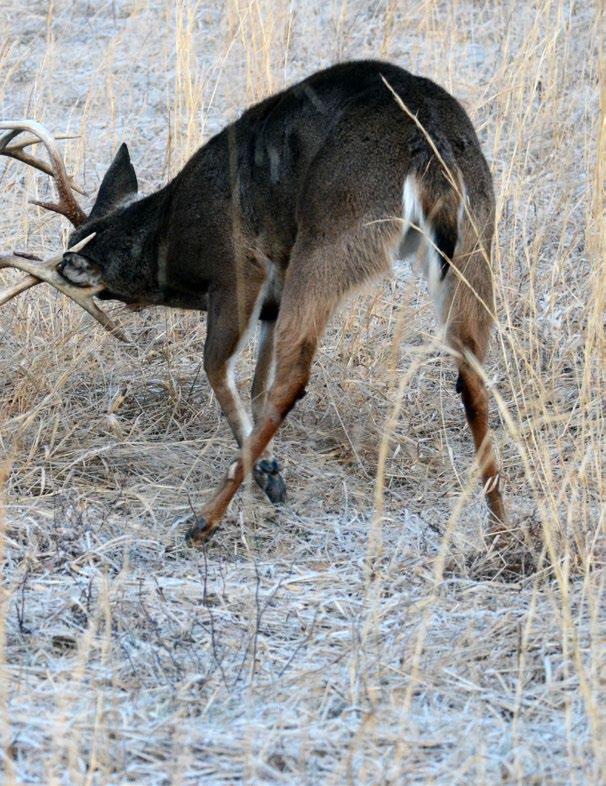
*
• How much time has passed since a certain deer has visited the scrape;
• How the deer ranks in the pecking order of the herd;
• What kind of mood the deer’s in;
• Which females have come to the scrape;
• What status those females have in the herd;
• Whether or not the female will go into heat soon;
• Whether the female’s already in heat; and
• Whether the female’s going out of heat.
“Trophy bucks have regular rounds they make, just like a policeman walking or driving a beat,” Miller emphasized.. “During the rut, the buck will make scrapes all along this route - some fresh but also some older, if he’s used this area for several weeks. By your taking a stand along this route during the rut, the mature buck may be easy to bag.”
Wildlife scientists also have learned that often bucks will scrape in the same region, year after year. When a dominant buck’s harvested, the next deer in the pecking order may move up to become the dominant buck and often will scrape in the same spots and meet his does at the same sites as the dominant buck before him has.
According to Jerry Peterson, the founder of Woods Wise Products, less-aggressive calls may be more productive during the rut.

“Stick with the breeding sounds, like the long estrous bleats, such as those made with can style calls, and the ABC sounds - the attention grunt, the bleat and the contact call,” Peterson said..
“The clicking I use during the peak of the rut works with rutting bucks, since it’s an extreme aggravation sound and usually rolls into the classic, aggravated grunt. You get that tick, tick, tick, tick, tick, grrrrruuuuunnnnnnttt, and usually at that time, the buck will make a stiff-legged rush at the doe.”.
“A buck will respond to a call with body language. For example, he may tuck his tail tight up against his rump – telling you that the call is making him very nervous. Or, a buck will raise his tail in a sexually-stimulated position, if he likes the sound he’s heard. If he throws his head up very erect, you have to be careful, because it may mean he’s interested, or he may feel threatened. That’s when I’ll revert to using a call that’s less aggressive,” he said.
“Two situations make rattling work,” Miller explained. “When a dominant buck hears antlers clashing, he may assume other bucks are in his area fighting for dominance, and that one of those bucks wants to challenge him. He may attempt to run off that competition. Rattling also probably works due to a deer’s natural curiosity. I think a dominant buck, does and subordinate bucks may respond to rattling just to see which deer will get whipped in the fight,” Miller said.
“However, rattling also has the potential to cause a trophy buck not to come to you. A trophy buck tending an estrous doe may not come to rattling, since he doesn’t want to run the risk of losing his doe. Previously I’ve watched a dominant buck steer a doe away from a place where I’ve been rattling. The good news is if during the rut you don’t see or take the dominant buck you’re hunting, you may spot and bag an even-bigger buck when deer expand their home ranges and move into new territories where they’ve never been before,” Miller pointed out.
“Each year I hear from several hunters who say, ‘I’ve never seen this huge buck before on the land I hunt nor has anyone else who hunts this same property. But I took him during the rut’. Hunting the rut can pay off for you,” he concluded..
This is whitetail deer expert and researcher, Dr. Grant Woods of Missouri take on a deer’s home range..
“When you’re talking about a deer’s home range, I think two terms have been confused. There’s:
* “the core area where a deer beds, feeds and waters throughout most of the year, and
* “the home range, which is everywhere a deer goes throughout the year, including during the rut.
“A buck may move out of his core area during the rut, but numbers of studies show that rarely will a buck leave his home range during the rut, even if the area’s clear-cut. Bucks generally don’t protect their scrapes and rubs or fight at them. The only territory a buck will defend during the rut is about 20 yards around an estrous doe,” he said.
The best way to prevent spooking the buck you hope to take during the rut is to travel to your stand wearing waders and moving through water
Well-worn trails like this one often will be where most hunters hunt during the rut, however, to take an older-age-class buck, hunt the dim trails, 30-75 yards off the green fields.

Looking for your own place to hunt, fish, enjoy 4-wheeling—even a building site for a cabin or home?
Alabama Ag Credit is the original land lender and your local expert in recreational real estate financing. We understand the unique requirements of long-term rural real estate lending, and can custom build loan packages with competitive rates and flexible terms. So you can enjoy the great outdoors for years to come!

Well-known deer biologist, Bob Zaiglin of Texas, always waits 15-20 minutes to let the woods settle down before he begins to rattle.
“You may have spooked the deer going into the area you want to rattle. When two bucks are preparing for a sparring match, they pound the ground with their feet. So, I use my rattling antlers to imitate the sound of pounding deer hooves for 30 seconds to one minute. I may bring deer into that pounding sound,” Zaiglin said. “The next step is to clash antlers together loudly and twist them. I’ll carry on this sequence for 1-1/2 minutes. If the hunter isn’t ready to take the deer when the buck comes into the rattling, he never may get a shot at him. When the buck doesn’t see the fight his ears have told him is happening, he’ll leave.”
Zaiglin explained that when two, 200-pound deer make a loud, clashing sound as they run together and hit and then lock-up, a pushing match results. The only time you’ll hear the sound of antlers clashing again is when one buck stumbles and falls, and the other buck attempts to move in and take advantage of this opportunity. Zaiglin reports that about 60 percent of the deer hunters rattle in never are seen.
Dead of winter low tides can be tricky but also fruitful for quality speckled trout like this one

It’s not often that you must decide on where to fish based not on where the fish are, but where you can launch the boat.
Such was the case on this mid-January trip. A bull cold front had pushed through 36 hours earlier and we were scheduled to go on the morning of the new moon. The low tide was already forecast at -.8’ and the aforementioned front had blown what was left of the water out. There are only a couple of ramps in the area where I could launch my big Skeeter, so we chose one of those. Fortunately, it happened to be on a local river that was holding some wintertime speckled trout and reds.
The good thing about extremely low water is that it does tend to eliminate a lot of the water that the fish can get to. With the water temperatures at their lowest of the winter, that decision was made even easier as the fish had been coming from the river channels. I managed to get the boat off the trailer without doing any damage to either boat, trailer, myself or the crew and we then bundled up and headed down river.
The trip turned out to be a good one as we stayed in the main channel throwing Slick Lures and soft plastic grubs. Although the water temperatures were in the upper 50’s the trout strikes were hard to miss. I am not sure why, but the strike of a trout in cold water is an unmistakable “thump”; versus other times of the year where the bite is noticeable but not nearly as pronounced.
“Dead of winter” low water fishing has some tricky elements, but can also be very productive if you are careful. Here are a couple of tips on dealing with these conditions that may make your winter trips more successful.
The first thing that can be risky when dealing with low water is getting the boat in. Most boat ramps are built with median water ranges in mind. Oftentimes, the concrete or shell of a ramp will end before the boat comes off the trailer in a low water condition. If the ramp goes out to deep water, the trailer tires will go off the ramp and you’ll have problems getting the boat out of the water when you get back in. That’s one thing to keep in mind.
In one particularly low water situation where I had launched and was waiting on the charter, I saw a fellow back down and try to slide his boat off the trailer by bumping the brakes. Luckily it didn’t come off before I could stop him and let him know that his trolling motor was going to catch the winch before the boat came off. We got him in the boat, and he cranked the motor and backed off while I pushed. This got the boat off without doing any damage. The newer remote control trolling motors protrude way off the bow and when the water is low. The stern will come up before the boat is off the trailer causing the mount to catch on the bow roller or winch. Proceeding to slide the boat off will tear the trolling motor off causing severe damage to both the boat and trolling motor.
Also, remember that when the water is low, barnacles that would not normally be exposed will be showing, usually right about where the boat lines up with the dock. In the battle between barnacles and fiberglass, the barnacles always win! It’s a good idea to keep a bumper or at least an old towel on hand to protect the boat when docking in low water situations.
Once the adventure of getting in the water is over, the good news is that the fishing can be really good. The first part of the fishing equation is to be around the fish and this situation makes that part a little easier to accomplish. The low water levels pull fish off the shallow flats and small tidal creeks and congregates them in the river or bayou channels; thus, making them more a captive audience.
Generally speaking, most of the tidal rivers are deepest in the bends, so when water is the coldest and lowest, these are great places to start looking. In water deeper than seven feet,, a soft plastic on a jig head will out-produce just about anything. Use just enough jig head weight to be sure your grub is getting to the bottom. If it’s not windy, usually ¼ oz. is enough. Color of the grub does make a difference, and I have found that either root beer or chartreuse will get it done. In clear water, I like the more natural root beer and if the water is stained, I like chartreuse.
The fish will let you know and as with any type of fishing, nothing is absolute. If you are confident that you are around fish, make sure to vary the colors before giving up and moving on. In water shallower than seven feet, the Slick lure is unbeatable. This fin-fish imitation does an uncanny job of mimicking a wounded mullet or pogie and big trout are especially tempted by the lure. The 1/8 oz Beast Swim bait hook from Owner Hooks is the go-to way to rig it. As with the grub, try varying colors until you find the one that the fish want. The “B-Cat” and “Dirty Ice” colors are my favorites in off colored water and the “Cool Beans”, “Goblin” and “Croaker” seem to work well in clearer or tannic water.
Fluorocarbon and braided lines have become a must for me on any application where the lure sinks. Both have little or no stretch which is a must for setting the hook with the Slick Lure. The lack of stretch also helps detect or feel the bite from a winter trout.
Some of my best redfish trips of the year come during mid-winter and especially on these low water days. Redfish are like rats and literally will go anywhere there is food, even if it means exposing much of their bodies. In the shallow marshes, they will push back in the smallest of creeks to get to shrimp or crabs. When the water levels get extremely low, they are forced out of the marshes These marsh drainages also dump their prey, so the reds tend to congregate near the mouths of the small creeks and drains. It’s amazing to see
how sometimes a small innocent looking creek mouth can hold so many reds.
An additional feature that I look for with redfish is shell or grass bottom. The next time you accidentally hook a shell, look at how much life is on it. You’ll see tiny crabs, worms and shrimp. When the food gets scarce during the winter, this is what the redfish are living on. Natural bait like live or fresh dead shrimp work well for wintertime reds but aren’t necessary if not available. You won’t find a better artificial bait for redfish than GULP! A GULP! Mantis shrimp or three inch shrimp fished under a popping cork just above the bottom will get any red that it is presented to.
Lastly, keep your eyes open as you motor around on low water days. I can’t count how many places I have found where I catch fish that I have found exposed on low water days. You’ll notice shell and sand bars protruding from points which can be extremely good areas to target on normal water level days during the spring or summer. If you have time as well, and are looking to learn to navigate an area, low water days are good times to do it. The channels as well as bars and obstructions will be more pronounced. Take a slow idle down the channel and save your track on your GPS for future reference. If you’ve made it from point A to point B on low water, you know you’ll make it on normal water levels. If proper precautions are taken.
In wintertime, low water fishing can be very productive. I sure hope that if you try them that these tips are useful to you.




 BY DAVID STRICKLAND
BY DAVID STRICKLAND
Rabbits are near the top of almost every wild predator’s menu, which is most likely why they have adapted a method of eating quickly and disappearing into thick cover. After their hasty meal of grass, weeds, bark, or twigs, they retreat to a more isolated location where they expel undigested matter in the form of sticky greenish-brown pellets called cecotropes.
Reingestion is a polite way of saying rabbits eat their own poop. After this second excursion through the intestines, those well-known brown fecal pellets get deposited on the tops of stumps or any location that enables them to watch, smell, and listen for approaching varmints.
To facilitate these quick meals, they have two large incisors on top, two on the bottom, and two tiny ones behind the upper incisors, called peg teeth. The incisors efficiently slice through vegetation in a scissoring action when the upper teeth slide behind the lower incisors.
Cottontails are the most abundant rabbit species in our state and have three to seven litters a year based on available food and habitat. They begin breeding at about three months, with gestation averaging 30 days. The litter size varies, but the typical brood numbers five, of which only one to two survive their first year, and though they can live on small parcels, their numbers adjust to match their habitats.
The cottontail’s reputation as a prolific breeder became mainstream gossip in the year 1202 when Leonardo Fibonacci published a book that introduced Europe to the decimal system and included a math problem that asked, “How many offspring can a mating pair of cottontails produce at the end of one year.” The equation derived from this exercise became known as the Fibonacci Sequence. His calculations asserted that 144
was the correct answer, and the same problem is still presented in many math texts today.
Long rotating ears, keen smell, excellent vision, and their ability to instantly accelerate help their survival rate; however, the average age of a rabbit in the wild is less than one year, even though their potential lifespan is 8-10 years.
Their ability to take quick bites also helps reduce their exposure to the many predators that target them when they feed in more open areas.
Alabama’s extended rabbit season begins September 10 and runs to March 5, with a limit of eight a day and eight in possession, and there are four huntable species found within our state.
These are about twice the size of the cottontail and are Alabama’s largest rabbit at around five pounds. They’re generally darker than cottontails and have cinnamon-colored hair encircling each eye.
They are strong swimmers and often forage in water three to four feet deep for aquatic plants and grasses. Thick cover near marshes and swamps is their typical habitat, and they inhabit all but the extreme southern portions of our state.
Eastern Cottontail - These are common throughout the state and the eastern US up to Canada, and their name comes from their fluffy white tail that raises if alarmed.
They have reddish-brown fur and usually weigh between two and four
The first and last hour of daylight is the best time to stalk the edges of fields. 877.314.1237

pounds. In addition, their front legs and feet are much shorter than their hind legs, and they have disproportionately long ears.
Appalachian Cottontail - Only slightly different in color and size from the Eastern Cottontail, a black spot between the ears of the Appalachian cottontail helps distinguish between the two.
They’re in the eastern upper third of our state, above 2,500 feet along the Appalachian foothills in older cutovers, Mountain laurel, and Rhododendron thickets.
These have a bluish-gray tail with chestnut-colored fur. Marsh rabbits are more miniature than Eastern Cottontails, with claws on their hind feet and much shorter ears.
They inhabit the extreme southern counties and brackish marshes of the Mobile-Tensaw River Delta in Mobile and Baldwin Counties. Considered strong swimmers, they often escape danger by swimming with only their eyes and nose above water.
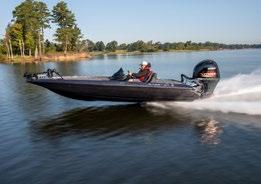
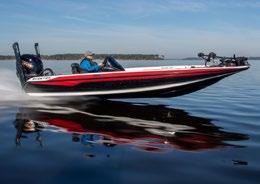
A few decades ago, it was common to hear tales about rabbit hunting with dogs at many family gatherings. There were more

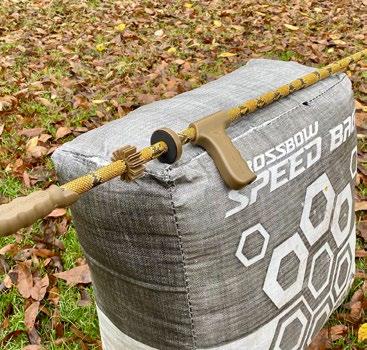
small farms back then with overgrown fence rows and small fields that were the ideal habitat for both quail and rabbits. Many rural residents kept a few beagles in their dog pens in anticipation of the first cold snap, and the sound of a tailgate lowering near a briar thicket was common.




Hunting rabbits is still the third most popular sport in many states. However, the decline of suitable habitats and fewer places to run dogs has resulted in fewer opportunities to listen to a pack of miniature hounds as they squeal and yelp through the thickets and fields in hot pursuit of their long-eared nemesis.
Rabbits hide in brush piles, thick stands of bushes, fallen trees, overgrown fencerows, or cane thickets, and they love briar patches. Often, a dog or hunting partner is necessary to flush those cottontails out in the open, but throwing rocks or sticks amongst the briars can often achieve the same results.
If you jump a cottontail, it will generally zig-zag as it scampers away and runs in a wide circle, but if you stay close to where it flushed and wait for the rabbit to come back, you will likely get another shot. So watch closely for its return, as it may circle behind you.
However, a swamp rabbit will often run in a straight line for quite a distance before they sneak back home. So, if you miss and don’t have a dog to bring it back around, keep hunting. They will run faster and farther than cottontails and often hop into view while the dogs are still distant.
Once you’ve mastered shotgunning rabbits and feel you need a greater challenge, blowguns, slingshots, and hawks are also legal means to gather the main ingredients for rabbit stew in Alabama.

I spoke with Mackie and Paul Deason to better understand what chasing rabbits with beagles entails. Paul explained that he is the third generation in his family to raise and train rabbit dogs. When I asked him what breed of dog he used, he said he preferred large beagles because that’s what his Grandfather used.
Paul explained that the AKC has two established beagle standards that define small as measuring under 13 inches at the shoulder and large beagles as measuring between 13 and 15 inches.
Paul’s father, Mackie, trained and hunted beagles for many decades before passing the torch to his son. Paul spoke about having fewer areas to hunt with dogs in our state but said a few dedicated beagle clubs still carry on the tradition.
Paul also keeps his dogs in prime condition through AKC Beagle Trials held throughout the Southeast. He explained that each dog is judged on their ability to search, pursue and take control during a chase, accuracy in trailing, endurance, adaptability to changing scent conditions, patience, and determination. His dogs recently placed first in four successive competitions.
Slipping along the edge of thick brush, a briar patch, or a greenfield during the first and last hour of the day is a great way to locate feeding rabbits. Taking about ten steps, followed by several minutes of observation, is a great tactic as long as the wind is in your favor. An accurate .22 rimfire or air rifle is great for those still shots, and for those jump shots, an improved cylinder 12 or 20-gauge loaded with size 7 1/2 shot works fine.
On cold, cloudy days, cottontails hold up in thick cover, so a good pair of chaps or briar-proof coveralls come in handy for zig-zagging through the thick stuff.
Cane cutters, or swamp rabbits, stay around backwaters and can be found in piles of brush, cane thickets, or fallen tops. When the waters rise, they often sit tight on small dry areas, and I’ve even seen them resting on a floating log jam.
Anthony Cross lives in Northwest Alabama and uses a Harris’s hawk to hunt cottontails. In addition, he uses a Black Creek beagle that tracks slowly and stays close. Cross said his hawk and dogs team up to harvest a few dozen rabbits each season in Colbert county and the hills of Kentucky. Cross echoed a common sentiment about swamp rabbits, “They take off like a deer and lead the dogs out of hearing quickly.”
The only thing better than kicking a few brush piles with family or friends is the crispy fried morsels of rabbit with gravy, a buttered biscuit, and a glass of iced tea.

Good memories stay with us for a long time, so why not add a rabbit hunt to your calendar and plan to take a young hunter with you? See if walking along fencerows, ditches, or briar thickets, interrupted by the sudden appearance of a patch of brown fur dashing by, might be just the necessary ingredient for one of those adventures that result in a story worth sharing around a campfire or the supper table.
BY MARTIN
Slow-cook rich game into a delicious ragu to serve with ribbon pasta. The stock and wine will keep the lean meat moist.
Prep: 30 mins • Cook Time: 1 hr 25 mins • Total: 1 hr 55 mins
Ingredients
• 2 tbsp olive oil
• 1 wild rabbit, jointed (ask your butcher to do this for you)
• 4 rashers smoked streaky bacon, chopped
• 1 small red onion, finely chopped
• 1 carrot, finely chopped
• 3 garlic cloves, crushed
• 2 rosemary sprigs, leaves picked and chopped
• 1 tbsp tomato purée
• 150ml white or rosé wine
• 500ml chicken stock
• 500g pappardelle pasta
• zest ½ orange
• 1 tbsp Dijon mustard

• 100ml double cream
• small bunch flat-leaf parsley, chopped, plus a few leaves picked to serve
• grated parmesan, to serve
1. Heat the oil in a large pan. When hot, add the rabbit, brown on all sides, then remove from the pan and set aside.
2. Add the bacon, onion and carrot to the pan and cook for 10 mins until soft. Add the garlic, rosemary and tomato purée, stir for 1-2 mins, then pour in the wine and chicken stock.
3. Return the rabbit to the pan, season, cover with a lid and cook over a low heat for 1 hr until the rabbit is really tender.
4. Remove the rabbit from the pan and shred the meat using 2 forks. Be careful to remove all small bones. Meanwhile, increase the heat under the pan and boil the liquid for 5 mins until reduced by half. Add the shredded meat and reduce the heat to low. Cook the pasta in a large pan of salted water following pack instructions. Drain, reserving a little pasta water to thin the sauce if necessary.
5. Stir half the orange zest, mustard, cream and parsley into the rabbit sauce. Add the cooked pasta to the pan, toss everything well to coat and heat through for 1-2 mins. Serve in bowls with grated Parmesan, parsley leaves and the remaining orange zest.
JAMES Recipe and image courtesy of www.bbcgoodfood.com
 BY FRANK SARGEANT
BY FRANK SARGEANT
No doubt about it, it gets downright chilly on the north Gulf Coast in late winter, and if you want to wet a line in either freshwater or salt, the opportunities are considerably poorer than they will be starting in late February.
With that in mind, Great Days Outdoors offers these suggestions for a New Year’s getaway, all within 500 miles or so of the central Gulf Coast, and all offering truly outstanding angling action in January.
Florida is definitely the place to go for January bass fishing, because the spawn we all wait for beginning in late February farther north is already fully underway in much of the Sunshine State. This means the biggest and heaviest largemouths of the year are likely to be caught as they feed just prior to going on the beds, so if you’ve always wanted to mark that elusive 10-pound-trophy as one of your catches, this is one of the best times of year.
Many would argue for the Stick Marshes east of Vero Beach as Florida’s best big fish spot at present, but from my experience of chasing bass for many decades here, I’d still have to give the top billing to Rodman Reservoir in Ocala National Forest.
Rodman regularly gets drawn down and refilled, which renews the vegetation and forage and recycles the fishery, regularly producing a new crop of giant fish every 7 to 10 years. Some big fish are caught on artificials, but if you want a real shot at a 10-pounder during a week’s vacation, opt for the giant wild shiners that are for sale at multiple bait shops around the lake.
These baits are 6 to 10 inches long, and they are lunker bass candy. You need a heavy 7’10” heavypower flippin stick rigged with 80-pound-test braid and 6/0 Kahle hooks to fish them, and the shiners cost a dollar or more each, but you can be sure of bringing a lot of big fish to the boat with them.
The trick is to “run” the shiner, tail hooked, up under the many hyacinth drifts and through the stump fields of the lake. The bait sometimes goes back under the cover 20 feet or more, and suddenly the weeds blow up. You’re hooked up to the bass of a lifetime! (Of course, getting it to the boat is a bit of a challenge with 100 pounds of weeds attached, but it can be done.)
Ten pounders are caught almost daily here, and fish to 14 pounds are reported every year.
Just about all fish are released here to protect the lunker fishery, but you can get a fiberglass mount if you want to commemorate your giant.
A plus here for the family is you’re less than two hours away from Disney World and other attractions of that type.
Guides: Charge about $400 for six hours plus the cost of shiners, and you may go through three or four dozen, having a guide is well worth the price in order to get an idea of how the reservoir fishes and where you can safely run your boat. Captain Sean Rush is one of the top rods here; https:// www.floridatrophybass.com.
Where to Stay: There are no lodges directly on the lake, which is surrounded by parklands. There are a few fish camps and VRBO rentals in Salt Springs and Orange Springs—otherwise, you may have to commute from one of the many camps or motels in Palatka, on the St. Johns River (itself a good winter fishery) about 15 miles away; https:// www.putnamcountychamber.com.
We would have recommended Charlotte Harbor but after the September hurricane, the infrastructure there is challenged. A good alternative is the south shore of Tampa Bay, where you’ll get a shot at snook, redfish, trout and sheepshead.
The water in Tampa Bay stays in the 60’s for most of the winter, just right to keep the fish active. Pick a full or new moon week if you can and you’ll
Redfish are the primary target on Tampa Bay’s South Shore in winter, and the fish are often in water just knee deep .

get some big negative tides in which miles of south shore flats get just a few inches deep. This is when you can readily see reds tailing up there rooting out shrimp and crabs. With them will usually be numerous sheepshead, which also eat the shellfish on the flats. The reds are easiest to catch on a soft jerkbait or plastic shrimp, though sometimes they take topwater as well.
The sheepshead are at least twice as hard to catch as the redfish—extremely spooky fish when they are up there in the shallows, though they seem dumb as rocks when found in deeper water. Casting a lightly weighted shrimp tail to them sometimes does the job. Best approach is to wade, for all the fish in extreme shallows.
Trout will drop into the many potholes on the negative tides—find a channel or hole six to eight feet deep and you can load up in one spot hopping plastic-tailed jigs or DOA Shrimp along the bottom.

A bonus here is to head up the coastal rivers—the Little Manatee and the Manatee are two of the best—and fish any sort of four to six-inch baitfish around the bridges and deep holes for snook. The snook stay in the rivers from December through February most years. Most average 4 to 7 pounds, but 20-pounders are not rare.
My favorite spot to stay here is Little Harbor, at the mouth of the Little Manatee River in Ruskin—basic but very convenient. There’s a nice restaurant and marina just a short walk from the motel, and you can sometimes catch
reds and mangrove snapper on shrimp right in the harbor in the evenings. Guides pick up almost at your door here; https://www.southshorechamberofcommerce.org.
Bradenton, just to the south on the Manatee River, is a good alternative, with a wide assortment of the usual major hotel brands. Or if you can afford premium digs check out the Waterline Resort on Anna Maria Island, where you can park your boat at the door. Top guides are the Moore family, Scott and Justin; https://www.whitesandsbeachresort.com/moore-fishing.
Though the water may get chilly inshore, the Gulf Loop Current continues to push warm water into the northern Gulf of Mexico throughout the winter, and lots of yellowfin tuna along with some wahoo ride the flow. The tuna like to hang on the vertical reefs created by the many deep-water oil rigs off the Louisiana coast, while the ‘hoo’s are often caught by high speed trolling on the way out to the rigs.
This is not fishing for sissies—yellowfins here in winter average 60 to 80 pounds and fish well over 100 pounds are not uncommon. They are absolute murder to pump up from the depths on 80-pound tackle. If you whip two or three, you’ll be whipped as well. Wahoo, on the other hand, tend to burn themselves out, usually with a first run that literally makes the reel smoke. After that, they slug it out about like a big king mackerel, a good fight but not
is a true liquid fertilizer that is designed to not only provide fertilizer to your food plot, but also supply calcium. Calcium is vital to the development of deer antler growth and egg shell strength in turkeys.

a back-breaker—average fish is 30 to 40 but 100 pounders are caught every year. Many say the white “hoo” steaks grilled are even better than the fresh tuna; it’s sort of a tossup.
If you’d rather go after fish that are more easily managed but just as tasty, have the captain target blackfin tuna, often found in the same areas as the yellowfins, but pretty much anywhere there’s good water color. Trolling Rapala X-Rap, Nomad DTX Minnows, and 113MR MirrOlures between oil rigs at speeds of three and nine knots finds them, and free-lining menhaden or sardines allows you to load the boat.

You’ll no doubt stay in Venice, one of the main jumping off spots for both blue water and inshore fishing here. If you get whipped by the offshore action, stay inshore for a day and wear yourself out catching oversize redfish at the mouth of the Mississippi.
Venice is not a night spot—it’s purely about fishing and oil, but you can expect to eat some amazing seafood while you’re there because tons of fresh shrimp, mullet, flounder and every other critter that swims in the gulf come across these docks and show up in local restaurants and fish camps.
Some camps host a bayou boil for guests, in which huge pots are loaded up with shrimp, crawfish, crabs, oysters, corn on the cob, potatoes and other goodies, along with a good dose of Cajun spices and boiled, then dumped on massive tables where everybody just digs in. If you want some city adventure, it’s there when you pass through New Orleans on the way home—gambling, endless bars and all the attractions of Bourbon Street.
Venice Marina is the center of all the action and offers lodging and charters: https://venicemarina.com/offshore.
• Will not settle out in
• There are no particles large enough to clog spray nozzles
• It is readily absorbed by plants because it is a foliar application. Therefore, within one hour 80-90% of the fertilizer is already absorbed into the plant and working
• Heavy rain will not wash away the fertilizer

Having the right setup that’s built by professionals and tuned for the specific adventure at hand is an incredible advantage . Image courtesy of Rooftop Arms

AR-10 and AR-15 rifles are all the rage. Those wanting an AR, gun hunters who decide to design a custom AR-15 are faced with challenges. The manufacturer options seem almost limitless. How to select the right components is even more daunting. Additionally, many parts are tactical-focused, and not attuned for hunting purposes. Therefore, it’s important to consider what each hunter should take into account when choosing the right design and builder of their AR-10 or AR-15 hunting rifle, or get professional help in doing so.

For those who are wondering, in most instances, it is legal to build your own AR-10 or AR-15. However, at times, there can be a lot of hassle, including paperwork, FFL involvement, among other things, details and situations depending. Whether it’s an 80% lower receiver, or not, and a short barrel, or not, also result in stipulations, but we aren’t covering those here. Of course, places and states can produce additional hurdles to address, if not all-out restrict what you can and can’t do.
Regulations aside, merely selecting parts can be a significant challenge. There are dozens of parts needed for a build, including a stripped lower receiver, upper receiver, bolt carrier group, bolt catch, selector, grip, trigger, gas block, gas tube, buffer, buffer tube, buffer spring, barrel, barrel nut, magazine release, and much more. Knowing what you need and want can prove difficult, especially if you don’t have a clear vision. Furthermore, if you select the wrong parts in each category, you’re left with things you can’t use or don’t need.
Furthermore, there are many mistakes (and
dangerous ones) that inexperienced builders commonly make. Some of these include loose or over-torqued barrel nuts, loose gas blocks, loose or stripped grip screws, damaged springs, incorrect parts, incorrect barrel lengths, wrong twist rates, and much more.
So, who should tackle the DIY route, and who should seek out professional help? According to Justin Cooper and John Quade with Rooftop Arms (https://rooftoparms.com/product/artemis/), the answer is clear. All things considered, unless you have extensive knowledge and skills, and have been trained in gunsmithing, it’s oftentimes best to have professionals build your AR. It’s that simple. Too much is at stake.
“I don’t think people realize the malfunctions that can go wrong,” Cooper said. “If you don’t tighten the barrel nuts [correctly], and it slowly backs off, the gun blows up. Things like that.”
“Essentially, the tough thing with ARs is that they’re so modular,” Cooper said. “Everyone thinks they are capable of building their own rifle, and I think they’ve kind of lost touch with the fact that there is a lot to having a certified gunsmith put something together.”
Despite the challenges and dangers, some people are qualified to assemble or build their own AR-10 or AR-15. They have the knowledge and understanding to do it correctly and safely with precision.
“There is a section of the market that is educated enough to make their way and don’t need a lot of help from us,” Cooper said. “When we do encounter those people, it tends to be questions
about a specific purpose, such as a 400-yard coyote gun. They’ll lean on us for that niche expertise.”
Those who don’t have the necessary expertise should consider working with a professional. Cooper explains how Rooftop Arms started, and it’s all because of bad experiences.
“John and I had countless bad experiences at gun shops,” he said. “You walk in and there is some sales kid trying to hard sell whatever’s on the shelf with the highest margin. They don’t really want to have a conversation and help you through the process. With us, customer service is tops. If they want to call and talk through something and make no sale, it’s fine. We just want to be a resource in this field.”
Either way, these guys are a resource, and they help you find the right fit. “You get to pick all of the features and get them right the first time, so you aren’t replacing parts, and end up with a bunch of stock parts you have no use for,” Cooper said. “You’re building exactly what you want with us helping along the way. Plus, it’s being put together by a person who is qualified and builds it right the first time.”
Regardless of the route someone goes, and which build option they choose, it’s crucial to remember key factors. Certain concepts and considerations must be kept at the forefront.
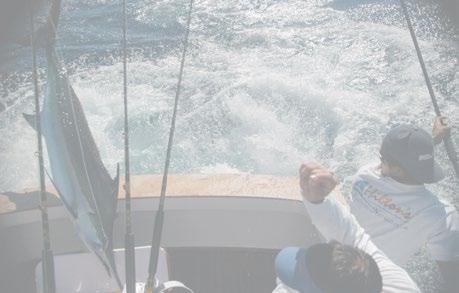

“You’re always going to think about weight,” Cooper said.. “As the caliber goes up, or you get into an AR-10 instead of an AR-15, you’re adding weight. That’s the challenge people face.”
Of course, finding the right caliber for the game you’re hunting is crucial and
finding that fit is part of the build process.
“Someone might want a .308 for deer or elk, for example,” Cooper said. “Then, they build this gun. It’s heavy and they have a crazy optic on it. It’s not what they want. So, we build things to a purpose first, and then you pick those little nuances. I guess, in a roundabout way, you must decide what you’re wanting to do with it.”
For example, if you need a varmint gun, .223 is a phenomenal choice. Rarely will a hunter encounter a state law that regulates caliber choice for coyotes and other non-game species. Plus, this is the ultimate option for coyote-sized animals.
Next, with the caliber chosen, it’s time for optics. Cooper says a mid-range option is perfect for this.
“For us, that’s the Recon,” he said. “It’s a model we make that’s perfect for varmint stuff. It has an 18-inch barrel and nice ballistics. It’s perfect for that.”
Small game animals and predators aside, for those wanting a larger caliber, it’s going to bump you up from an AR-15 to an AR-10 platform. “With deer and elk, you’re into an AR-10 that we make called the Artemis,” he said. “It’s a lightweight .308 in an AR-10 platform. You get some better knock-down, but it’s not 12 pounds. It’s 8 pounds. I think people can save weight when compared to a bolt gun. And you get better capacity — 10 rounds instead of three or four.”
Naturally, there are tradeoffs to consider between different firearm build options, especially if transitioning from something else to an AR. Cooper says that, if switching from a bolt gun to an AR, there might be some negatives but the positives include the modularity and capacity. The Artemis is the ultimate AR for deer hunters.

“We built that gun to have the knock-down of a .308, but not weigh someone down like crazy,” Cooper said. “It has a carbon-fiber buttstock, which is about 1 ½ ounces. But it’s super strong. You can use that buttstock to help yourself up off the ground. It’s a woods gun even though in the photo it doesn’t look like it.”

Furthermore, he says the carbon-fiber handguard cuts a bunch of weight. Still, it’s very durable and strong. Also, regarding hunters who stalk, hunt in rugged terrain, and need the utmost stealth, the handguard doesn’t have much for it to snag on. This is a very minimalist handguard that’s sleek, quiet, and performance driven.
Overall, finding the right AR for your hunt can take time and extensive knowledge, and if you don’t have these things yourself, keep Rooftop Arms for your custom AR-10 and AR-15 builds in mind.






Most of us rely heavily on our cell phones to keep us in touch with friends and family, and many folks use the cell phone as part of their work. When they function properly, cell phones are remarkably efficient tools, but when they don’t work- for whatever reason, cell phones are a source of frustration, and in certain conditions, non-functional cell phones can make a dangerous situation even more dangerous.
Since nearly everyone who uses a cell phone has experienced dropped calls, no cell tower contact, or other kinds of loss of service, we all have probably wondered what can be done to improve cell phone service and contact.
Josh Barnes, director of consumer products at Wilson electronics and in particular weBoost cell signal boosting technology tells us, “Basically, weak cell phone signal is caused by three things: cell tower location and distance- if the nearest cell tower is far away from the cell phone, the signal will be weak. If there are natural obstructions- these can be mountains, hills, or even thick trees and leaves, cell phone signals can be diminished. Finally, man-made obstructions- like metal roofs or metal building walls or the metal of cars and trucks can hurt cell phone signals.”
Lots of us have bad cell reception. Barnes tells us, “Up to one-third of people in the US have bad cell signals, but we can improve the situation with a signal booster.”
The weBoost system can be either installed by the owner or a crew will come and install .

The big problem with all of these cell phone signal diminishers is that as cell phone users, we can’t do much about them. We can’t move the cell tower closer, and we can’t cut down all of the trees around us, and we can’t put a new non- metal roof on a building we must use.
Especially for folks who live in rural areas or have hunting or fishing camps way out in the backcountry, distance to cell towers and interference things like tall trees can really degrade cell phone service.
Barnes says, “It’s not really practical to clear out a whole forest between you and a cell tower, so what we do instead is we have an outside antenna with all of our signal booster kits. Generally, the higher we can go with that antenna, the better because that gives us a little more line of sight and we can pick up a stronger signal,” Barnes said. “Then we send that signal through a coax cable to a booster that amplifies the signal. And then we send that boosted signal to an inside antenna that broadcasts that amplified signal to cell phones, hotspots, and any cellular connected devices within reach. Then, the booster also works the opposite way, sending that boosted signal from the devices back out toward the tower for your cell phones, your hotspots, and even cellular connected devices. We also work the opposite way where we send that boosted signal out toward the tower- which is also important.`` By the way, weBoost works with all carriers.
“There are three main parts to our system- an outside antenna, booster and inside antenna. These three parts are connected by coax cable. For
those who opt for the DIY route, we have an app that walks you through the whole installation process including instructions, videos, and tools to have the best setup. Installation requires the outside antenna to be installed on a roof, mounted to the fascia or a pipe (our included mount accommodates for both). The coax cable from the outside antenna is routed into the house to the booster (some products include a thin window cable that a window can be closed on and maintain a weather-tight seal). A separate coax cable runs from the booster to the inside antenna.
Barnes says, “It really depends on how much signal we have to work with. And so if we’re in a steel shed with a really strong signal outside of that shed, we can really cover a large area on the inside, and that’s what a lot of our commercial applications do. When we have a weaker cell signal on the outside, it really depends on how much signal can be used. That will determine how much area we can cover on the inside.”
When it comes to using cell signal booster for mobile applications- like cars and trucks and RVs, working with a quality, experienced professional company like weBoost is a great advantage.
“These are pretty technically complex products. And there are rules by the FCC that we have to stay within. Depending on the situation, there are different levels of amplification that we can apply,” Barnes noted. “So when it’s a stationary product, like home products or even our destination RV that’s designed for stationary recreational vehicles where people boondock for extended periods of time), we use the most amplification we can which goes up to 72 dB of gain, and this gets people farther away from the towers. There are also vehicle applications where we can
go up to 50 dB of gain, and these are used very, very widely. They are used by cars, everyday commuters who are in weak signal areas. They are really heavily used by RVs and overlanders as they are getting out to remote areas. Fleets are using them, and we’re seeing an increasing amount of our antennas on semi-trucks because they know that they’re in weak signal areas a lot of times that they need to stay connected.”
“These systems basically work the same way as our residential boosters but are built to withstand the different environments these products will be used in and comply with the FCC rules to make sure these powerful products are safely working with the networks,” Barnes explained.
Some cell phone booster systems are sold which claim to solve weak signal problems in any location and any situation. Truth be told, these “do it all” systems tend to not do anything very well. It takes a dedicated for specific use system to provide maximum cell signal boost. Barnes pointed out. “We’ve intentionally made these different kits for each application. We want people to have the best experience, so we make the best kits possible for each of these applications.
“You get what you pay for. weBoost products are designed, assembled, and tested right here in the United States. Additionally, we have a topnotch customer support team here in the US that is happy to assist you with any questions you may have with purchasing or setting up your booster,” he said.
Important Contact Information weBoost.com 1-866-294-1660


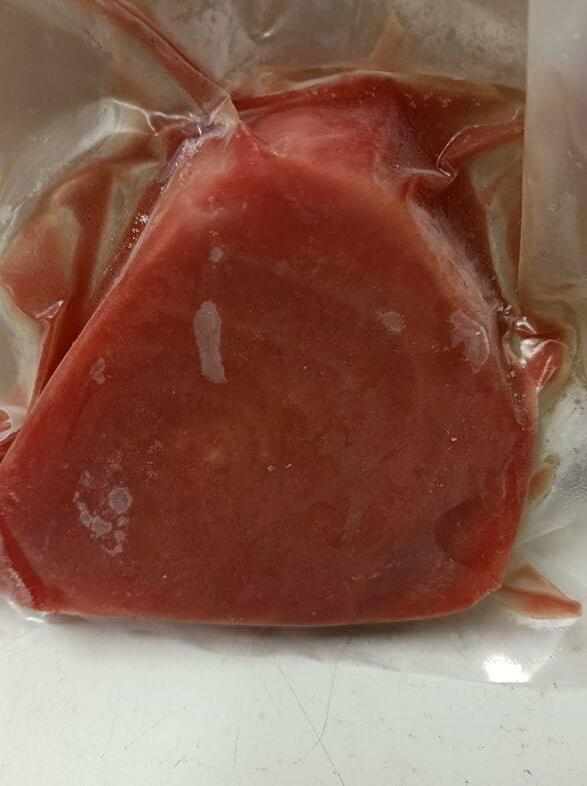
“Many anglers claim vacuum sealed fish will easily last a year or so without showing appreciable damage.”
A huge dilemma faced by any angler after a successful day of fishing is how to deal with their catch, especially when freezing part of it is involved. Even in these days of tighter fishing regulations and lower catch limits, it is easy at times to end up with an excess of fish. Ideally these most fortunate anglers try to spread their bounty among family, friends and neighbors while the fish are still fresh. But the inevitability is that at least some fish ends up in the freezer, placed away in cold storage for an unspecified period with varied results.
Through social media and articles like this, more anglers are becoming better enlightened as to ways that ensure their supply of frozen fish flesh is of the best possible grade.
The primary thing an angler can do to assure good quality fish comes out of their freezer is to take steps toward that purpose even before the fish are caught. Having plenty of ice on hand to keep the fish from degrading is critical, especially in hot weather. Thoroughly bleeding fish as soon as possible also decreases the amount of blood’s volatile compounds found in the fillet or fish muscle we typically consume. This helps ensure that your fish will have minimal issues when it is frozen properly. So keeping the catch as cool as possible, promptly rendering and properly freezing the fish goes a long way toward accomplishing this goal.
The size and species of fish is a big deal too, as some species simply freeze better than others due to fat content or even general thickness of the fillets. Generally speaking, the more fat or oil in the fish you freeze, the less time it will remain palatable. This is most critical with fish like mackerel, bluefish, salmon or even pompano that are quite oily to begin with. So to best protect your future meal it is most beneficial to meticulously trim ALL the so-called “red meat” from the fillet before freezing.
Commonly, the entire carcass of flounder and pompano are frozen, thawed and cooked whole. With these or any other frozen fish or seafood, a dash of ground ginger gently rubbed into the flesh after thawing will subtly neutralize much of the often referred to “fishy smell”. That condition is usually the result of various oils in the fish turning rancid over time. Yes, that happens to food even while it is frozen solid, albeit slowly.
Keep in mind, as cells freeze the water inside them expands and the walls of many of these cells rupture. Consequently when that fish thaws, plasma from these ruptured cells leach into nearby cells and the entire piece of fish picks up some of that odor. This is why it is best to pat down thawed fillets with paper towels, then sprinkle a little ground ginger on them and gently rub or massage the paste over the fillets with your fingertips. It doesn’t take much.
The best way to protect fish fillets or pieces while frozen is to vacuum seal them. Modern vacuum sealers are common and dependable appliances, and many are moderately priced at under $100. The vacuum draws out almost
all of the air and much of the excess moisture. The impermeable plastic bags come in rolls that can be custom cut to suit the size of the fish you are freezing. These are a little thicker than the pre-sized plastic freezer bags (gallon or quart), and that helps insulate the fish pieces from moisture loss that can lead to ice crystals forming on the fish flesh resulting in “freezer burn”. Larger fish pieces like fillets, or parts of fillets can be bagged, stacked and individually frozen with this method to minimize freezer burn over longer periods. Despite its unappetizing appearance, freezer burned fish is still safe to eat, though the taste and texture are degraded. How long this process takes to occur usually depends on the freezer temperature and the quality of fish preparation before it goes in the freezer.
Another matter is the type of freezer used, because of the low temperature that can be maintained. Dedicated small to medium sized chest or box freezers are designed to keep food like fish fillets colder for longer periods than the freezer compartment attached to your kitchen refrigerator.
By design your refrigerator’s freezer continually draws moisture out of the air in that compartment to keep it at the desired temperature. Unfortunately this tends to draw moisture out of whatever is in that compartment contributing to a shorter shelf life. Plus these type freezers are opened more often (such as when getting ice cubes) than totally dedicated deep freezers. The frequency this happens leads to periodic temperature rises within the compartment that may well even allow frozen items to partially thaw.
The U.S. Department of Agriculture (USDA) offers specific guidelines for freezer storage of fish and other seafood. Their website states: “Any frozen fish or shellfish will be safe indefinitely; however, the flavor and texture will lessen after lengthy storage. For best quality, freeze (0 °F / -17.8 °C or less) cooked fish for up to 3 months. Frozen raw fish is best used within 3 to 8 months; shellfish, 3 to 12 months.”
Still, many anglers claim vacuum sealed fish will easily last a year or so without showing appreciable damage. That is certainly much longer than fillets just “dumped” into a plastic bag and frozen into a mass. If you don’t have a vacuum sealer, it is best to at least take time to arrange the fillets in a single layer so as to minimize air spaces between the pieces. Then squeeze as much air as possible out of the bag before closing it up. Finally, stack the bags on top of one another before placing them in the freezer to minimize air space between the bags. Most fish fillets last six to nine months frozen like this.
Glazing is another method intended to protect fillets or large pieces of fish from freezer burn for a few months. While freezing fish within a large block of ice produces a poorer quality protein product because of the overwhelming amount of water the fish is exposed to during the thawing process, glazing that fish with just a thin layer of ice not only protects it but allows for faster thawing with less water soaking into the fish.
The process is a simple one. Place the fish on a metal cooking tray in the freezer overnight. Then remove and dunk each frozen piece in a bowl of ice water and replace it on the metal sheet and put it back into the freezer. The re-
sulting ice glazed pieces can later be individually wrapped to slow evaporation of the ice in the freezer over time. They may even be re-dipped to replace loss of the glaze, helping ensure product freshness over a longer period.
Another method that minimizes freezer burn on small pieces of fish intended for deep frying is to bread them prior to freezing. This process is actually far more convenient than dealing with completely thawing a huge ball of fish pieces frozen all lumped together. Because you still have to deal with drying and breading lots of “soggy” fish pieces before frying them.
To accomplish this, simply trim the fish into fillets that fit inside a frying pan, or into inch wide strips (what my kids used to call “fish fingers”). Rinse the pieces, then drain them of excess water. Drop them into your favorite breading and place the pieces side-by-side on a cookie sheet with wax paper between the layers. Then place the tray in a freezer overnight. The next day you can remove the tray and give it a smack on the counter top to dislodge most of the pieces (like dropping an ice bag to separate the cubes). Place the pieces into a gallon sized freezer bag for storage in the freezer. The breading on the fillets acts as a sort of insulation that protects these smaller pieces from freezer burn for up to six months or more. But generally they don’t last that long at our house. When it’s time to cook some, get the oil hot and simply take out however many frozen pieces you want from the bag and drop them into the pan (like you would frozen french fries). You can fry the whole bag for a family, or a couple of pieces for a fish sandwich.
Air fryers work great with pre-frozen breaded fish too! Simply arrange the pieces on the tray, spray a little cooking spray on them and cook for 10 to 12 minutes at 400 degrees. This produces crispy coated pieces of flaky fillets without the added fat of using cooking oil. These are just but a couple of quick preparation methods with all the work done ‘up front’ so they are ready in your freezer when you need them!

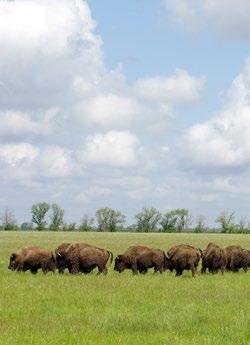

• 2 pounds sheepshead fillets
• 3 tablespoons lemon juice

• 2 tablespoons melted butter
• 1 small onion, chopped
• 1 bunch fresh parsley, chopped
• salt and pepper
• olive oil
• dill
1. The night before, place sheepshead fillets in a ziplock and mix the salt, pepper and lemon juice in it. Let the sheepshead fillets marinate all night or for at least a minimum of 4 hours before preparing.
2. Get a baking sheet and aluminum foil and place a little olive oil on it before the sheepshead fillets. Once this is done, place the marinated fillets on a baking sheet on top of the aluminum foil. Coat the outside of the sheepshead fillets with melted butter. (Coating should be in a brushing motion not to overdo it)
3. Carefully chop up onions, fresh parsley, and fresh dill to place on and around the sheepshead fillets.
4. Place all the onions and parsley around the fillets and the fresh dill on top. Drizzle a little bit of olive oil on top of the fillets.
5. Cover your sheepshead with another piece of aluminum foil making a small covering over the fillets to ensure they will keep the moisture in and not to dry out.
6. Preheat the oven to 450 degrees to ensure proper cooking of the fish. Once the oven reaches this temperature, reduce the temperature to 400 degrees and place the fish on the oven’s top rack.
7. Cook the sheepshead fillets for 12 minutes or until cooked.
8. After this is done cooking, pair it with your favorite rice and vegetable. Our favorite sheepshead recipes usually include brown rice and steamed broccoli. This is a recipe that the whole family will enjoy every time you make it.
Recipe and image courtesy of Hunting and Fishing Depot (www.hfdepot.com)First South Farm Credit (FSFC) has been financing rural land since 1916. Since it was founded over 100 years ago, FSFC now has grown to over 40 branches with 9,000 members and serves the “Deep South” in Alabama, Louisiana and Mississippi.
As an affiliate of the national Farm Credit System, a network of borrower-owned lending institutions, First South Farm Credit specializes in providing credit for farming operations that include crops, livestock, land, and timber. FSFC is also chartered to help with financing lifestyle farms, rural home sites or rural land tracts for enjoyment or investment purposes.
As a rural lender, First South Farm Credit basically lends money to people for pretty much anything that they want to do “in the dirt”. That could be row cropping, growing timber, raising livestock or farming for wildlife. It doesn’t stop there.
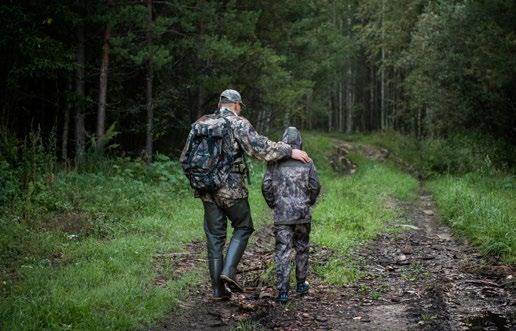
FSFC can assist a property holder in enhancing the value of the land. That includes things such as improving timber stands, clear-cutting, clearing roads, planting green fields, building ponds and planting trees and shrubs to improve green areas and cover for deer and turkey. It even encompasses lending money for controlled burns and planting of grasses and grain crops for things such as quail development and assisting in constructing access roads.
“First South Farm Credit can make construction loans and, if needed, can turn those loans into long-term loans. Some landowners are building secondary homes, hunting cabins or lodges, and others want to put their primary residences on 20 to 30 acres” says Taylor Hart, the branch manager of First South Farm Credit in Opelika, AL. “Perhaps that person wants to sit on his or her back porch and look at a pond and we make loans for pond construction as well.”
“First South can make loans for anything a landowner wants to do to
develop his property or its habitat or the amount of wildlife there. If you’re playing in the dirt, we want to be in there with you, as long as you’re improving the value of the dirt, which is the collateral of the loan,” Hart said.
But wait, it gets better.
In addition to its extensive experience in agricultural and land financing, one thing that sets First South Farm Credit apart from other lenders is that they are a cooperative.
When you borrow money from FSFC, you become a member and that means you own part of the business. That ownership entitles you to share in the profits through their Patronage Refund Payment Program.
In other words, First South Farm Credit gives its customers, who are actually owners, money back. While it can’t guarantee payments back to you or the exact rate of return, as long as it remains profitable and well capitalized, FSFC is committed to sharing its profits and has made patronage payments for the past 26 consecutive years.
At First South Farm Credit, as of 12/10/22, depending on credit rating, the terms of the loan and other credit factors, the land loan rates will vary. Call the First South Office in your area for a rate quote .
In addition to financing land, FSFC can finance your land improvements, new and used tractors, and other equipment that is used to maintain and enhance your rural property .
First South Farm Credit has sixteen (16) locations in Alabama . You can call 1-800-955-1722 or visit their website at FirstSouthLand .com to find the location nearest you – and to start the conversation about financing your land.

Traveling to hunt is a lot of hunters’ dream. Whether it be a whitetail hunt in a trophy-rich midwestern state, different species of wild turkey out West, or even a big game hunt, such as bear, elk, moose, or sheep, many hunters need to fly to get there in a timely manner. Of course, for firearm hunters, that means flying with a gun.
But how do you do this and what are some of the things to keep in mind? Follow along as we talk about some of the things to remember before going to the airport, and while there.
The Transportation Security Association (TSA) (https://www.tsa.gov/ travel/transporting-firearms-and-ammunition) is the governing body for flying, including with guns. “You may transport unloaded firearms in a locked hard-sided container as checked baggage only,” TSA said. “Declare the firearm and/or ammunition to the airline when checking your bag at the ticket counter. The container must completely secure the firearm from being accessed. Locked cases that can be easily opened are not permitted. Be aware that the container the firearm was in when purchased may not adequately secure the firearm when it is transported in checked baggage.”
In addition to TSA’s guidelines, some airlines have their own rules. So, study up on both TSA laws and rules in place by your chosen airline.
Those who fly with a gun must place it in a locked, hard-sided case. Ensure the case cannot be opened by unauthorized parties. It must not be accessible to others. (Even locked cases that are easily opened will likely get rejected.) Soft-sided cases do not protect your firearms and optics from impact damage, and are not permitted for properly securing the guns, either. Some good gun cases to choose from include Allan, Plano, Pelican, and more. Make sure you have a lock for each lock hole on the case. One or two likely won’t pass inspection. And do not leave the keys in your checked baggage. These should remain on your person.
It’s crucial to make sure your firearm is unloaded. For bolt actions, pull the bolt, but at least open the action (on any gun). Never leave a loaded firearm anywhere, but especially in the case during the flight. This is dangerous, and against the law. Ammo cannot be within the chamber, or the magazine of the firearm. Furthermore, if both the ammunition
and gun are “accessible” to a passenger, it’s also considered to be loaded. That seems like gray terminology, but essentially, make sure your gun and ammo are stored properly and locked away.
Your ammunition should also be placed within the locked, hard-sided case. It’s best to keep these in their original packaging. However, TSA says that “ammunition (up to .75 caliber and shotgun shells of any gauge) must be packaged in a fiber (such as cardboard), wood, plastic, or metal box specifically designed to carry ammunition and declared to your airline.”
“Ammunition may be transported in the same hard-sided, locked case as a firearm if it has been packed as described above,” TSA said. “You cannot use firearm magazines or clips for packing ammunition unless they completely enclose the ammunition. Firearm magazines and ammunition clips, whether loaded or empty, must be boxed or included within a hard-sided, locked case.”
In some instances, airlines limit the quantity of ammunition you can bring. Loose ammo and other items are not accepted.
Oftentimes, TSA agents might need to open your gun case even after you’ve opened and showed it at baggage drop. If that happens, and it isn’t a TSA lock, they’ll likely call you to the desk, but might even cut them off. If that happens, they generally place new locks on the case for you.
There are many different places with varying rules and regulations. That makes it crucial to study international, state, and local laws. Do this not only for your home and destination states, but also any that you’ll travel through, even if it’s a connecting flight, or just driving through. For example, in some states, the gun and ammo must be locked up in separate hard-sided cases. Others don’t permit certain types of firearms or those that don’t check certain boxes.
Those who plan to fly out of the country will need to check with U.S. Customs and Border Protection (CBP) for requirements prior to the trip. It’s vital to register your firearm and other pricey gear with them prior to your travel date. Sometimes, this is required by the country you travel
to. However, the big issue is that, upon arriving back to the States, this keeps you from having to pay duty (taxes) on items you have already purchased here at home. This process will likely require a Certificate of Registration for Personal Effects Taken Abroad (form 4457).
Always check and declare your firearm. Failing to do so can result in steep fines, penalties, and even incarceration. At baggage drop, when checking your luggage, the agent will need to see your opened gun case. They will inspect the gun, ammo, and then place a ticket inside of the case. They will also watch you close and lock the case. Afterward, they will place it on the luggage beltway, or direct you to take it to another agent for further inspection. And certainly, keep your baggage claim tickets. You’ll need these, especially if the gun case is lost during transit.
You cannot carry anything firearm-related onto the plane. This includes bolts, clips, magazines, and even firing pins. All gun- and ammo-related items must be in a locked, hard-sided checked case. That said, according to the TSA, scopes are permitted in both carry-on and checked baggage.
It’s always important to be polite to everyone. But certainly, be polite to the TSA agents handling your firearm processing. Remain polite even if they’re hateful. Trust me, they can make your life very difficult, if they choose to.
When traveling with a firearm, always arrive at least an hour earlier
than you would if not traveling with a gun. This usually isn’t a long process, but it can be. Allot plenty of time to take care of things.

A lot of hunters are fearful of losing guns when flying. I’ve brought guns on distant hunts that required a plane ride. On one of my return trips home, my rifle case wasn’t released along with the other luggage at baggage claim. It was held up, and temporarily lost, in Canada.

Fortunately, I was able to immediately go over to the airline’s customer service center, track down the case, and schedule it a ride home. I had to return to the airport the next day, which was about a 1 ½-hour drive one-way, but at least I got my firearm back.
Overall, firearm cases are usually deemed as “oversize luggage” and aren’t available for pickup with normal luggage. Instead, it should be placed for pickup at a different designated counter. If your firearm case doesn’t appear at the regular luggage carousel, check there, and then with customer service.
The moral of the story, if the dreaded lost firearm case does happen, don’t panic. Oftentimes, you can borrow a gun from another hunter until yours arrives in camp. If returning home, it often just requires a second trip to the airport to pick it up once it arrives. The fear of losing a gun to a botched airline operation shouldn’t keep you from flying to a distant land to accomplish your dream hunt. Just take all available steps, and use available resources, to ensure everything goes as smoothly as possible.
If you have additional questions about flying with guns, contact TSA’s customer service center (https://www.tsa.gov/contact/customer-service). They’ll convey the answers you need.
Flying with a bow isn’t nearly as regulated as with a firearm. Still, it must be checked baggage. You can’t carry-on bows, arrows, broadheads, etc. And it’s very important to use a locked, hard-sided protective case all the same. The Plano Parallel Limb Bow Case (https://planomolding.com/collections/archery-cases/ products/parallel-limb-bow-case-999114400) is an excellent option.
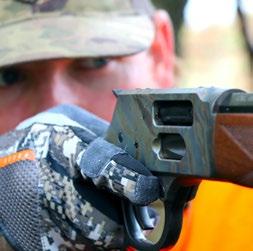
Arrows can be tricky, but will likely be fine within the case. If worried, place with an arrow tube inside the bow case. However, always remove broadheads and place them in a small, hard case within the bow case. Don’t leave these floating around, or even on the arrow within the quiver. A loose broadhead can wreak havoc on your bow and other things. It’s also a safety hazard.
Oftentimes, after packing, I’ll place other items, such as clothing, around my archery equipment to provide extra protection.
Furthermore, if traveling outside the country, remember to register your gear with customs.
It’s important to use a gun case that is made for the job. It needs to be drop- and impact-resistant. This includes a durable exterior, protective interior, and high-quality foam within.


Plano Field Locker Element
Single Long Gun Case
https://planomolding.com/products/field-locker-element-single-long-gun-case-plam9501?variant=40468133118112
Airline Approved: Yes
Color: Black
Dimensions: 52.14” X 13” X 6.75”
Exterior Seal: Waterproof Firearm Capacity: Single Firearm Type: Rifle
Foam Type: Pluck-To-Fit
Interior Dimensions: 50” X 10” X 5.88”
Wheeled: No MSRP: $239.99
Plano Field Locker Element
Double Long Gun Case
https://planomolding.com/products/field-locker-element-double-long-gun-case-plam9540?variant=40468134396064

Airline Approved: Yes
Color: Black
Dimensions: 56.38” X 18” X 7.25”
Exterior Seal: Waterproof Firearm Capacity: Multiple Firearm Type: Rifle
Foam Type: Pluck-To-Fit
Interior Dimensions: 54” X 15” X 6.4”
Wheeled: Yes
MSRP: $319.99 877.314.1237 //
A full quiver of rods arrayed on the front deck mean the angler is ready for whatever the fish throws at him.
(Mustad)

 BY FRANK SARGEANT WITH TIPS FROM BASSMASTER ELITE PRO BRANDON LESTER
BY FRANK SARGEANT WITH TIPS FROM BASSMASTER ELITE PRO BRANDON LESTER
Basically, there’s no one “best” rod for largemouth bass fishing.
Today’s top anglers typically carry a quiver of various rod lengths, powers and actions to meet changing conditions on the water and to best throw their favorite lures. Even weekend anglers like to have at least five rods arrayed on the front deck so they can quickly switch from a topwater to a bladed swimbait to a jig as they move to various fishing spots.
Spinning tackle, once the redheaded stepchild of bass fishing, is now being included by most anglers for days when “finesse” fishing with small lures and light lines is required for success.
With that in mind, here are a few primers on what the average spread of rods might look like for a serious Southern bass angler—along with some sage advice from well-known pro angler and Angler of the Year (AOY) runner-up in the Bassmaster Elite Series this past year, Brandon Lester.
But first, a few basics so that we’re all on the same page.
Rod Power refers to how much force it takes to flex a rod. It outlines the range of lure weights and line tests the rod was designed to cast. It can also be used as a reference for the size and strength of fish the rod was designed to fight.
You don’t take a knife to a gunfight, and you don’t take a light power rod out to chase tarpon. For bass fishing with bait casters, most anglers prefer rod power from medium to heavy or even extra-heavy, depending on the application.
Heavy power rods are physically heavy and that is an easy way to remember the difference. They literally weigh more because they have more material in the blank to allow fishing heavier lines, throwing bigger lures and landing heavier fish or fishing in heavier cover.
The heavier the power of the rod, the harder it will be to cast light lures, but the better it will be with heavy lures like big swimbaits. The lighter the rod, the better it will cast lighter lures but it will feel like a limp noodle if you hook it up to a four ounce Castaic swimbait.
On the flip side, the heavier the rod, the easier it will be to get a good hook set, even with large single hooks. Conversely, the lighter the rod, the harder it will be to drive home a large hook so you have to size down your hooks for better penetration with less pressure.
Rod Action refers to where the bend or deflection takes place along the rod’s length during casting. A fishing rod is most powerful in its butt section, and that power diminishes the closer you move towards the tip. Different actions move those transition points.
Choosing Best Bass Fishing Rods For Different Fishing Styles
Fast action rods flex mostly near the tip, providing fast access to the rod’s powerful mid and lower sections.
Moderate action rods are more flexible, bending into the middle, while slower action rods flex all the way down into the butt section. Fishing rod actions range from slow to extra-fast.
Most bass anglers prefer fast action or extra-fast action rods for throwing most types of lures. They provide maximum sensitivity, great casting accuracy and the ability to make fast and powerful hook sets. Extra-fast rods can be used in a variety of fishing situations but are most popular with single-hook applications like worming and jigging.
Medium action rods are best for throwing crankbaits and other fast-moving treble-hook lures, where fish may not get solidly hooked on the strike. Many pro anglers say the softer action makes it more likely the fish will stay hooked long enough to get it to the boat.
Slow action rods are more the province of live bait anglers who want to gently accelerate a bait without throwing it off the hook, or those who throw flyweight lures for trout or panfish. They’re not common in most bass boats.

The rod’s length, power and action are usually printed on the shaft just above the handle. Many look like this: C70MF, which would mean this is a casting rod, seven feet long with medium power and fast action.
But there’s no universal standard on how heavy a heavy power rod is or how fast a fast action rod might be, so it’s up to the angler to try various brands and choose rods that will work for his or her style of fishing.
There are also several other variables that affect how well a rod works for a particular lure or fishing technique.
Having the correct handle length and reel mount location can mean the difference between the perfect rod and a tip-heavy rod. Most anglers like a baitcasting rod to balance just in front of the reel with the spool loaded with their preferred line and no lure attached.
A typical medium-heavy fast action baitcaster is likely to have an 11” handle or butt section, and that’s good for all-around fishing, the right combination of leverage and light weight, and it also balances nicely on the typical 6’10” to 7’ rod with a typical low-profile reel of around eight ounces. Reels of different weights may change this balance significantly, of course.
If you throw heavier lures in heavier cover, or use a longer rod, or have to reach out really long distances, a longer handle will be better. Some jumbo flippin’ rods may have handles up to 16” long. If you’re a big guy with long arms, this may not seem awkward—if you’re an average size angler, on the other hand, it will likely be difficult to handle for more than a few casts. Try before you buy is good advice—try using a buddy’s long-handled setup to see if it works for you.
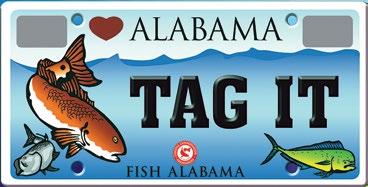
Full grips of composite are durable and comfortable, though they add weight to a rod and they’re often found on crankbait and flippin’ rods. Split grips, with an exposed blank between cork or composite sections, are preferred for lighter gear and for maximum sensitivity as in worm or jig fishing.
Brandon Lester is not only a well-known and highly successful Bassmaster Elite tournament bass angler, he’s also something of a bass rod fanatic. He has now put his knowledge of rod science to work with Mustad in their new BLF Instinct Elite line in both baitcasting and spinning models.
The rods are all built on 30 TON, IM8 Japanese Toray premium graphite blank with original Fuji® composite reel seats and
The crankbait lineup includes three heavy power, moderate action rods with 7’1”, 7’3”, and 7’6” lengths and full length composite handles. The moderate action helps keep fish hooked up on the relatively small trebles of crankbaits, and the full length handle is more comfortable for dealing with the pressure put on by a big crankbait.
Lester noted the crankbait models all have extended handles to allow powering large crankbaits long distances.
“The further you throw a crankbait, the deeper it can run,” Lester.said. “So that long handle is an important part of the design.”
He pointed out that they all have “moderate” or medium action, which reduces the chance of lightly hooked fish shaking free.
The Mustad BLF Instinct Elite lineup also includes eight other baitcasting rods in various tip speed and power designed to cover a broad range of bass angling’s power fishing techniques. All have split-grip handles to keep weight down while still providing plenty of leverage for long casts and for fighting big fish.
“On the baitcasters, we’ve got everything from a 6’10” medium power fast tip for throwing topwaters and jerkbaits up to 7’9” extra-heavy fast tip, which is a punchin’ rod or for throwing big swimbaits. It’s strong enough to allow you to boat-flip a 5-pounder, no problem,” Lester said.
“If somebody said to me, ‘I’m not a really big fisherman, I just like to fish every now and then and I just need a good, quality fishing rod,’ I’d tell them to buy a seven foot medium heavy rod,” Lester said. “You can drag worms
on it, you can throw a spinnerbait on it, you can throw a squarebill crankbait on it, a ChatterBait or even a frog. You can do a whole bunch of different stuff with that one rod.”
THERE ARE ALSO THREE MUSTAD BLF INSTINCT SPINNING RODS FOR FINESSE FISHING.
“With the intense pressure on a lot of our fisheries these days, sometimes a finesse approach is the best way to get bites, and put fish in the boat,” Lester explained. “These rods will let the angler shift gears and fish those light lures when needed.”
He says the 7’2”, medium power, extra fast action spinning rod is engineered for maximum casting distance with light lures like Ned Rigs and drop-shot setups. Mustad also offers a finesse 6’10” medium-light action model designed for 4-10 lb. line to throw 1/16 to 1/8 ounce Ned rigs and similar tiny baits in clear water.

Then there is Lester’s favorite, which is a 6’10” medium-action model designed for 6-12 pound line, with which he throws pretty much all his Ned Rigs, Neko rigs, shaky heads and drop-shot rigs.
“I can catch pretty much anything with that rod,” he said. It throws a mile, it has really good sensitivity with the light lures and it has plenty of power to set the hook and fight the fish.”
Mustad is a Norwegian company that has been making top-quality hooks since 1832, but the company is now evolving into a comprehensive fishing platform that will supply every link in the tackle chain with top-quality gear. They now own LIVETARGET lures and TufLine lines as well as producing their own brand of fishing tools, clothing and assorted terminal tackle. See details at www.mustad-fishing.com.

The small transducer on the bottom of a trolling motor (seen here) is revolutionizing the world of fishing for bass, crappie and stripers
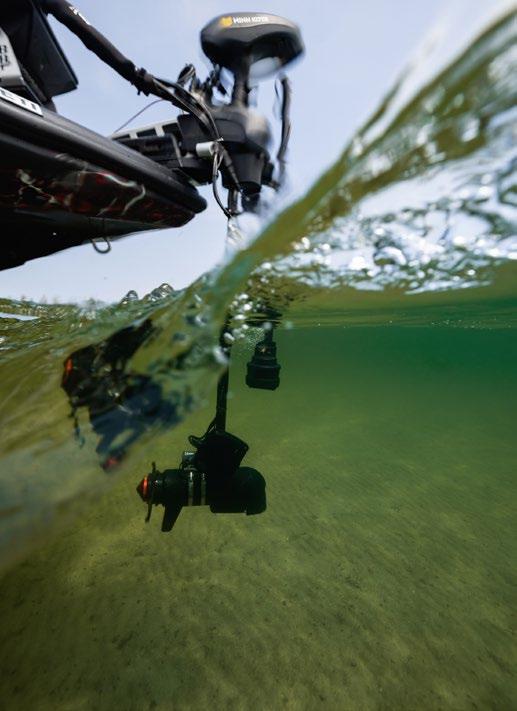
When forward-scanning sonar first came out, many anglers considered it a gimmick to get professional fishermen to buy expensive, new sonar. Many older fishermen were reluctant to change and to believe that technology could help them fish better. However, the best bass anglers never are too old to learn new things.
As Kevin VanDam, winner of four Bassmaster Classics who’s made $7 million in bass tournaments had this to say on the issue.
“Forward-facing sonar completely has changed what I’ve thought, believed and practiced for 30+ years of competitive bass fishing. This new sonar has shown me that more bass are in the lakes I fish than I’ve ever assumed and in places I’ve never looked. This sonar also shows me what a bass does when it sees my lure,” VanDam said.
Randy Howell, the winner of the 2014 Bassmaster Classic, today fishes the Major League Fishing Tour and lives on Alabama’s Lake Guntersville.
“We’re seeing younger bass fishermen moving up to pro-level fishing and being competitive in their early 20s because they use technology that resembles video games,” Howell explained. “Look at what Auburn University students, Tucker Smith and Logan Parks did, winning over $1 million in cash and prizes at the 2021 Bass Pro Shops Amateur Team Championship using new technology.”
Howell reported that forward-facing sonar takes the guesswork out of pinpointing bass.
“You can see the fish, determine their sizes, learn how they’re positioned in the water and the depth they’re holding on and relating to your lure and set the hook just as a bass takes it. Forward-facing sonar is sight-fishing, replacing the fisherman’s eyes.
“Young people who have grown-up in the video-game world use technology more than older anglers do. They know what the depth finder’s showing them and how to react and use that information. Also, there’s vast information on YouTube about how to use forward-facing sonar. Young bassers spend more time using forward-facing sonar and finding fish than they cast,” Howell said.
Howell didn’t embrace this new sonar at first.
“But my 21-year-old son, Laker, who guides on Lake Guntersville, had learned the advantages of this sonar and how to use it and taught me in 2021 to use this new sonar to locate bass in open water and learn how they suspend under baitfish. I dedicated myself to be a student of ActiveTarget
and practiced diligently and caught some of my biggest bass ever,” he said.
First, Howell learned what the various fish species looked like when watching an ActiveTarget screen, in deep water and shallow.
“During the 2022 season, just about every bass I weighed in during a tournament I’d seen on my ActiveTarget before I ever cast,” Howell emphasized. “I realized that learning how to use this sonar had improved my bass fishing.
“If I see a stump, a log or a bush in water three to six feet deep, I can use my ActiveTarget to look all the way around the structure, locate where the bass are holding and know where to cast to catch these fish. On Guntersville, I can see through the underwater grass, identify the holes and the bass in the grass, see which fish are looking for the bait and cast to them and catch them,” Howell noted.
Howell mentioned he can’t always see his lure in relation to the bass, but at least he knows a bass is where he’s casting.
“Many young bassers also are using Aqua-Vu cameras that plug into the backs of their Lowrance ActiveTarget screens and enable them to see the bass showing on them,” Howell said. “They’re watching fish in real time. Many northern anglers today who fish clear water are using the Aqua-Vus too. When MLF fished at the St. Lawrence River in New York, numbers of anglers were using the Aqua-Vu with ActiveTarget, dropping their Aqua-Vus down, spotting the fish, identifying their sizes and learning that a green fish was a largemouth, and a brown fish was a smallmouth. Each of the depth-finder companies - Lowrance, Garmin and Humminbird - are trying to find the next new technology that can improve a bass fisherman’s ability to locate, spot and catch bass.”
Howell says he hopes that technology’s next advance is a Lowrance underwater camera that’s incorporated into the ActiveTarget. Then all he’ll have to do is push a button to make the camera zoom in for a closer look at the fish in color on his screen.
Joey Nania guides on Alabama’s Coosa River chain, Lake Martin and Smith Lake. He fishes the Bassmaster Opens. When “GDO” interviewed Nania, he’d returned from taking customers out for a day of fishing.
“We caught bass first, then crappie and lastly, stripers. I used my forward-facing sonar to pinpoint these different species of fish and took my
877.314.1237
customers to these fish. They then enjoyed catching all three species in a day,” Nania noted.
“I’ve primarily been a bass-fishing guide and always have hated crappie because they generally hold in brush or some other type of structure. But, with my Garmin LiveScope that I use all day, every day, I can see the brush and the crappie, watch my jig fall and see a crappie take it. I’ve also learned that many-more crappie are in lakes I fish than I’ve ever thought. About 75% of the fish I catch, I’ve seen on my screen first,” he added.
During the winter months on the Coosa River, Nania enjoys targeting stripers.
“For some reason, when the water becomes colder, the stripers schooloften with 4-10 pound stripers in them. Occasionally, we’ll catch a 12-25 pound striper,” Nania said.
Nania uses the Garmin ECHOMAP Ultra 106 unit with a 10-inch screen and a transducer.
“I’ve learned from this unit that this sonar is much-more precise and enables me to locate many-more fish. I even can determine if the fish will bite quicker, than when I’m using my side-scanning or down-scanning sonar. With down or side-scanning sonar, I may have to go across a point several times to spot the structure and learn where the bass are and at what water depth they’re holding,” he said. “However, with forward-facing sonar, I can see everything on that point, including the brush and the fish, and I can catch them quicker. I’ve also learned so much more than I’ve ever known about how bass behave, and how and where they move. Many-more bass are suspended in open water than I’ve ever believed.”
* To Catch Predator Fish: “When I spot baitfish on the surface, I move toward them with my forward-facing sonar to identify the kind of nearby fish, bass, crappie, gar, drum or catfish, eyeballing that school for a potential meal,” Nania reported. “I’m looking for predator fish. If they’re actively
feeding, they won’t be schooling but will be swimming fast, rarely sitting still in the water. I can tell how big that predator is with my forward-facing sonar.
“To catch predator fish, I determine in what direction the fish are moving and cast out in front of them, deciding how long my bait needs to sink to reach the predator’s strike zone. Sometimes, I’ll see fish 55-feet down and cast a long way in front of them. If I spot a bass moving quickly toward my bait, I’ll move the bait away with a jerk and then usually the bass will take it,” he said..
* To See Underwater Structure: Most anglers tend to believe that forward-facing sonar is used primarily for finding open-water, suspended bass that aren’t relating to any type of structure.
However, Nania doesn’t see it quite that way.
“I also use forward-facing sonar to study underwater structure better. For instance, if I spot a tree limb sticking out of the water, I can see the entire tree underwater, find the trunk and continue to look down the trunk, until I spot the underwater root ball of the tree where I’ll usually make my first cast.”
* To Understand Grassy Area Bass: “I use my forward-facing sonar when I pinpoint offshore hydrilla and/or milfoil,” Nania said. “This new sonar enables me to see how thick the grass is, where the holes in the grass are, where bass generally stay, and where the high spots are.

“In the past, once I saw underwater grass, I’d fish blindly down the grass line, not knowing where the bass were. Today, by seeing the underwater grass on my depth finder, I can run a lure right over the tops of the grass, let it tick these tops, watch how my lure’s running and prevent it from getting hung in the grass,” he added.
Nania has one depth finder on the front of his boat and one at the console. “
I find the bait and structure with my down- and side-imaging. Then with the LiveScope attached to my trolling motor, I can study that structure or school
of bait, the fish related to it and the depth where the predator fish are concentrating to know where I need to cast to them. If I spot the bass running away, I’ll get behind them and follow, casting various lures, until I find the one they want to bite,” he explained.
Nania uses his LiveScope to show him what’s around his boat in every direction and beneath at distances of up to 80-90 feet from the boat.
“I’ve used LiveScope so much that once I see a fish, I can determine how far it is from the front of my boat and place my lure right in front of its face. Then I look at the top of my trolling motor to know where to cast,” Nania pointed out.
Tournament bass anglers and guides probably have adapted to this new forward-facing sonar because their incomes are directly tied to the number of bass and crappie they can pinpoint and catch. Forward-facing sonar pays off for every fisherman.

Aqua-Vu Underwater Cameras
https://www.aquavu.com/aqua-vu-shop/underwater-cameras
Garmin LiveScope
https://www.garmin.com/
Humminbird Mega Live https://www.humminbird.com/learn/imaging/mega-live
Lowrance ActiveTarget (https://www.lowrance.com/lowrance/type/sonar-transducers/activetarget/)
Joey Nania
https://joeyfishing.com/
the money spent on turkey permits, which is part of the licens
Pictured is Randy Howell with one of the biggest bass he’s ever caught in his life, and he says, “Forwardfacing sonar has made a positive impact on my ability to find and catch bass . ” 877.314.1237

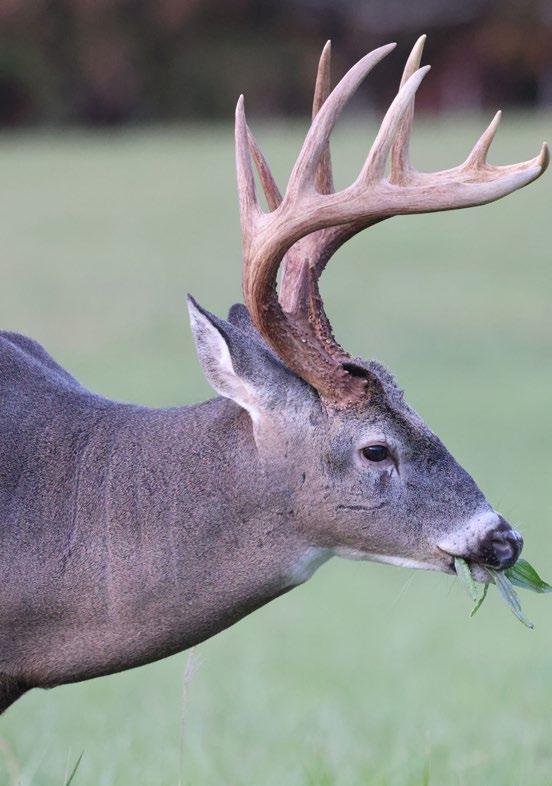 BY JOSH HONEYCUTT
BY JOSH HONEYCUTT
Come January, most hunters are hanging up their gear but others are still going strong. For them, there’s no time to waste. Hunting season must continue. Oftentimes, they plan these outings and have fun hunts. For them, it’s all about finding the best hunting trips for January. If you’re interested in the same, check out these great hunting destinations for southern hunters to try.
Many of the southern states see rutting activity in January. These destinations give hunters opportunities to hunt the rut much later than the remainder of the country. It ultimately extends a hunter’s deer season, especially the quality of it. Of course, while the below rut data is provided by each associated state wildlife agency, be sure a hunting season aligns with the mentioned timelines.
Alabama is king of the January rut. While a few counties see a rut in late November through December (parts of Lawrence, Calhoun, Cleburne, Randolph, Chambers, Lee, and Winston counties), the remainder of the state ruts from early January to early February.
Georgia is another state that does so. However, it’s only a very small portion of its rut that extends into January. This spot is in the southwestern corner, and includes southern portions of Seminole, Decatur, and Grady counties.
Florida is another area with a late rut. The western half of the Panhandle region, and about a 50-square-mile area around the Winterhaven area in the Peninsula are two such areas. Both see an early January to early February rut.
Louisiana is another January rut destination. Numerous parishes in the eastern part of the state offer such opportunities. Some of these include parts of West Carroll, East Carroll, Madison, Catahoula, Concordia, Avoyelles, St. Landry, Lafayette, West Feliciana, East Feliciana, Pointe Coupee, St. Martin, St. Mary, Assumption, Iberville, West Baton Rouge, East Baton Rouge, St. Helena, Livingston, Ascension, St. James, John the Baptist, St. Tammany, Tangipahoa, Washington, and other parishes. In fact, some of these, and others also extend into February.
Mississippi has January whitetail rut dates. Most of the state ruts in December, but much of the southeastern half of it runs hot in January. This is even truer the further southeast you go there. George, Greene, Jackson, Perry, and Stone counties are the latest areas in the state to see rut activity and can even extend into early February.
It wouldn’t be right if we didn’t talk about Texas. It’s a famous January rut state, and some of it sees a rut during that timeframe. Generally, the further South you go, the later the rut. Early January in South Texas can offer some good hunting.
Of course, numerous southern states have peak rut dates in December. This means that mature does that were missed during their first cycle, and doe fawns entering estrus for the first time, could be in estrus during the month of January. Keep that in mind during your late-season hunts in such areas.
Kentucky is home to a lot of CRP (conservation reserve program) areas. This results in a lot of grassy lands full of game, big and small. Throughout the years, this has resulted in a boom in rabbit populations. If you have rabbit dogs, or know someone who does, this can make for a great hunt (https://fw.ky.gov/Hunt/Pages/Small-Game-and-Furbearer-Hunting-andTrapping.aspx).
In the Eastern Zone, the season lasts from November 14 to February 10.
In the Eastern Zone, it runs from November 14 to January 31. Ultimately, rabbit season is open throughout the month of January statewide (https:// app.fw.ky.gov/seasondates/). This makes it an excellent place to chase bushytails.
Louisiana is one of the best places to hunt waterfowl, and it’s an easy drive for most people in the Southeast. Interestingly, it offers excellent opportunities during the month of January. For ducks, the East Zone regular season is open November 19 to December 4 and December 17 to January 29. The West Zone regular season is open November 12 to December 4, December 17 to January 1, and January 9 to January 29.
For light geese (snow, blue, ross), white-fronted geese (specklebelly), and Canada geese, the East Zone season runs November 5 to December 4 and December 17 to January 29. The West Zone season spans November 5 to December 4, December 17 to January 1, and January 9 to February 5.
There is also a conservation order season for light geese. The East Zone season is December 5-16 and January 30 to March 5. The West Zone season is December 5-16, January 2-8, and February 6 to March 5.
Each of these hunts can produce awesome opportunities that most other southeastern states cannot come close to offering.
One of the best options for January is a Texas exotics hunt (https://tpwd. texas.gov/regulations/outdoor-annual/hunting/nongame-and-other-species)
The Lone Star State is home to some cool hunts that you can’t really experience anywhere else. Why not enjoy these after you’re done hunting native species?
Some species to go after include addax, aoudad, axis deer, blackbuck antelope, Corsican sheep, eland, fallow deer, kudu, impala, mouflon sheep, scimitar-horned oryx, sika deer, springbok, zebra, and numerous others. These and more offer great adventures for hunters looking for something different.
I haven’t hunted this complete list of exotic animals. Far from it. I’ve only hunted one — the Axis deer. However, last year, while testing out a new Axe crossbow, and Rage broadheads, I shot a great buck in Texas. It was a great experience, and something I highly recommend outside of your regular deer seasons. Other exotics on this list are great, too.
Some states throughout America have big whitetails, and few non-resident deer hunters realize it. Everyone knows about the Midwest, but some southeastern and northeastern states go overlooked. If traveling to a distant land is in your future, keep the following whitetail sleeper states in mind:
In the Southeast:
In the Northeast: 1. Delaware
In the West:
Overall, there are many different options for January hunting. You just must take the leap and go do it. Give one or more of the outlined options a try, and you might just find a new hobby this January. 877.314.1237
 BY WILLIAM KENDY
BY WILLIAM KENDY
What exactly is an aerator and will it help to maintain and contribute to the vitality of your pond? What I mean by that is will it help you grow bigger and healthier fish?
The term “aeration” basically means “to introduce air into a material” and that “material” includes water. The problem is that there is a basic misconception as to the actual benefit for the owner of a freshwater fishing pond when it comes to aerators and how they work.
Norman Latona is president of Southeastern Pond Management. SE Pond offers services that cover the waterfront of pond development and management including ecosystem analysis, management programs, pond construction, liming, fertilizing, fish inventory assessment, removal processes, stocking of forage and game fish, maintenance and more. They cover the Southeast and do projects in other areas such as Illinois and as far west as Arkansas and Texas
According to Latona, many pond owners don’t really know exactly what an aerator is, what it does to benefit the fishery and, aside from the aesthetic side of the equation, why they should have one installed.
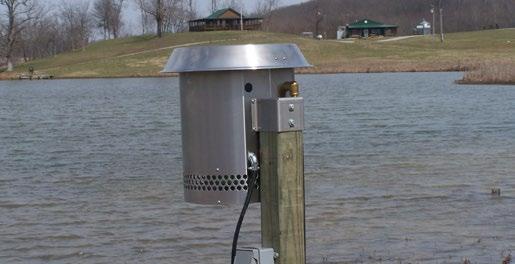
“For most of the ponds we deal with, from one acre up to several hundred acres, the vast majority don’t need artificial aeration in order to survive and thrive,” Latona said. “Artificial aeration in aquaculture and fish production operation may be a requisite, but it really isn’t in ‘classic fish pond management’ designed for fishing.”
Latona explained that the average well limed and fertilized pond with bass and bluegill and forage fish has about 300 to even 400 pounds or fish per acre. When you look at aquaculture (the breeding, rearing and harvesting of fish and other organisms in a water environment) that number can increase to thousands of pounds of fish per acre. That type of operation is on a whole different level then an average fishing pond.
“When you ratchet up the density of fish per acre from hundreds to thousands of pounds that increases the biological oxygen demand (BOD) on the water. You get more and more critters vying for oxygen and more waste material being produced that consumes oxygen in the decomposition process,” Latona said. “It isn’t even apples to oranges; it is apples to concrete blocks.”
Latona points out that aeration of any pond is expensive. In order to impact the dissolved oxygen over an acre of water that is several feet deep it takes about one horsepower per acre of pond. Plus, there is the cost and
operating expense of the equipment. While a pretty little fountain out in the center of the lake with rotating light colors that shoots water up eight, ten or more feet may look great, it only moves a little bit of water a great distance In terms of effective pond wide aeration (oxygenation) , it really isn’t having an impact or benefiting the pond environment.
True aeration moves massive amounts of water a very short distance and is effective in adding oxygen to a large body of water and that is where the concept of thermal stratification and “Destratification” comes into play
Destratification is a process in which air or water is mixed in order to eliminate stratified layers of temperature or plant or animal life and it is different from aeration. It’s not really adding oxygen to the water, it is a systematic way to increase the amount of water in a pond that has oxygen in it.
“Everyone who has jumped in a lake or a pond in the summer knows that while your feet feel chilly the water around your chest feels like bath water and that is thermal stratification,” Latona said. “Warm water is less dense than cold water so it sits at the top of the water column getting heated up by the sun and it insulates the colder and more dense water below. Those layers don’t mix and the colder water has less oxygen.”
The point where the two layers separate is called the “thermocline” and in the summertime, below that line, the water is colder and more comfortable for the fish, but basically devoid of dissolved oxygen. That means fish can’t live there. They can dive down to grab a baitfish but if they stay too long, they will suffocate.
One of the phenomena of a thermally stratified pond is that the pond may experience a fish kill in the hot summertime after a big cold windy thunderstorm.
“You have a string of hot summer days and all of a sudden you get a massive cold-water thunderstorm with lots of cold water coming out of the sky and a bunch of wind all in a very short period of time and it forces a mixing of the layers,” Latona said. “The result is that the mix of water overall has too little oxygen for fish to survive and, boom, you get a fish kill.”
It’s like an automobile/wildlife roadkill scenario on steroids, except that the automobile is mother nature and the roadkill is fish.
“As a result, folks think that they need to have aeration and the truth of the matter is the top layer before the thunderstorm came blowing in was 877.314.1237
While summertime is the most common season for a fish kill, a kill can occur in the fall when the weather takes a turn for the worse. “Sometimes





see them in the fall when suddenly the air temperature drops 30, 40 and even 50 degrees and the water on top just cools down so rapidly and gets denser and it starts to sink,” Latona added.
The solution is a destratification system.

The system is connected to a shoreline mounted compressor, normally housed in a centrally located protective cabinet in plastic tubing which is run to various strategic locations in the pond. They are hooked up to “airstones” which are similar to the filters you see in aquariums except much larger Air is pumped to the stones which breaks it down into millions of tiny bubbles and when that air makes its way to the surface it is displacing water and creating a gentle current.
“It looking just like a kind of a boil about the size of a pickup bed and what we are doing is taking that cold water at the bottom and forcing it to the top and taking the warm water at the top and forcing it down to the bottom and creating a current effect which effectively eliminates pond stratification,” Latona said. “It eliminates the ‘turnover’ and we aren’t really adding oxygen to the water but we are moving water and equalizing the oxygen content from top to bottom.”
In addition to the efficiency of a destratification system Latona says that for a ten-acre pond you can run a rotary vane compressor in an insulated steel cabinet running 24/7 for approximately $30-$50 a month. While the cost of the system is dependent on a number of different factors, it isn’t exorbitant, considering the scope of the investment you have in your pond.
Latona tells pond owners that the cost of installing a destratification system is dependent on the shape and design of the pond, the water depth (the deeper you locate the stones the more efficient they are), the bottom contour keeping an eye out for deeper holes and other variables.
“It gets a little bit tricky in terms of design and it is hard to say what the actual cost will be overall but I’ll say that in general, typically, you’re talking about a couple of thousand to get you started and three, four or maybe even five thousand bucks for the destratification system and that will get you a long way,” Latona said.
Pond aerators basically get water moving. When the bubbles rise to the surface, they create lift which causes the colder water on the bottom to join the parade to the surface then come back down. It basically mixes all of the water temperatures together, preventing algae bloom and, in the colder times, helping to reduce pond “freeze over”.
The size of pond aerators are rated on a cubic feet per minute (CFM) basis. For a one and a half acre pond a 3.0 CFM aerator may do the trick but that depends on the specifics of the pond. For larger ponds the CFM requirements increase. Size and costs of equipment and installation are dependent on how big the pond is along with the bottom contour and characteristics of the structure and surrounding environment.
After all is said and done, what about fishing in a pond that doesn’t have stratification? Is it easier to catch fish or is it harder? When you equalize the oxygen levels across the water column that means that fish have a wider habitat. You could catch fish in five feet, 10 feet or, depending on the pond, even deeper. Does it enhance your angling experience or does it make it more challenging? Does it make the fish harder to target or does it congregate them in some cooler water with good oxygen levels?
“It’s probably a different answer for every pond and lake and the challenge is for the fisherman to figure it out,” Latona concluded.





A one to two pound largemouth is a great candidate for cooking whole on the grill or in the oven. A 2-pound fish can be stretched to feed two people, but you may need to make a big batch of potatoes to go with it.
Ingredients
• 1 - 2-pound largemouth bass; cleaned scaled and dressed
• 1/4 cup olive oil
• 1 tablespoon Kosher salt
• 6 sprigs fresh rosemary
• 2 cloves fresh garlic peeled and thinly sliced
• 1/3 cup Dijon mustard
• 1 cup dry white wine
Instructions
1. Preheat the oven to 375 degrees. Rub fish inside and out with olive oil and season with Kosher salt. Cut three slits in each side of the fish. Place rosemary sprigs and garlic slices inside the slits (and it won’t hurt to put a few more inside the cavity). Place fish in a baking dish. Combine mustard and wine and pour over fish. Bake for 10 - 15 minutes or until just done.
2. Note: If you’d rather cook this one on the grill, leave the fish in the baking dish for 30 minutes with the wine/ mustard mixture over. Don’t place the dish in the oven. Instead, refrigerate for 1 hour. Remove the fish from the fridge and place on a medium-hot barbecue until browned on both sides and just cooked.
Admiral Oysters are now available for retail by the dozen at Bon Secour Fisheries, Inc. in Bon Secour, Alabama. Fresh, raw oysters can elevate any event. From a simple, nutrient dense appetizer at home to a shucking party with friends, Admiral Oysters will steal the show. Call 251.949.7411 for pricing and availability

Oysters grown at our farm are consistent in size and flavor profile. Frequent handling and wave energy at our unique location creates a sustainable environment in which our oysters thrive. This combination results in the perfect half shell presentation of the Admiral Oyster.

We are located near Fort Morgan AL, in an untouched wild stretch of beach that will be immune from development. The site has witnessed centuries of history including the Battle of Mobile Bay as Admiral Farragut charged into the Bay with the iconic line “Damn the torpedoes, full speed ahead”. That motto comes in handy on cold rainy mornings and when the winds get high!

Visit Us at AdmiralShellfishCompany.com


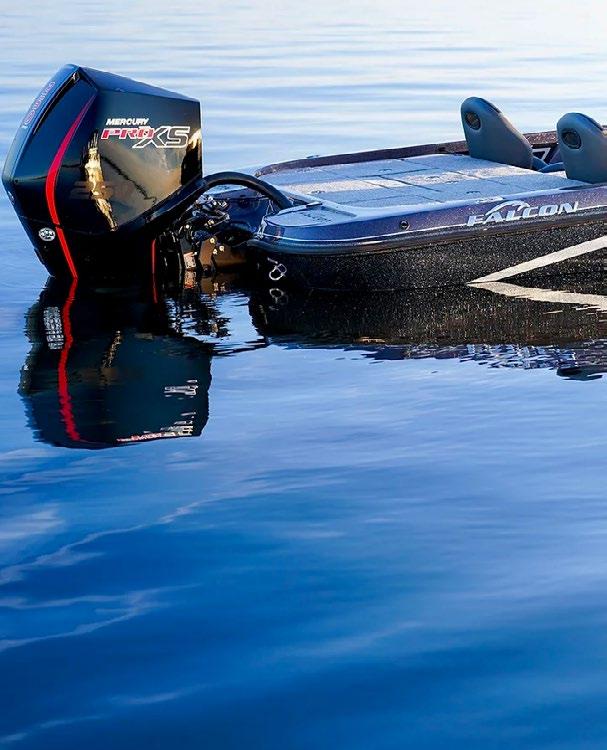 BY DAVID STRICKLAND
BY DAVID STRICKLAND
Are you looking for a new boat or perhaps a few upgrades for one you already own? Do you have a specific model in mind? What is the best way to see a wide variety and get good information at the same time? How do you go about finding the best bass boat that fits your needs and gives you what you want for the money you have to spend.
Depending on your location, you may need to travel a considerable distance to put your hands on a model that piques your interest. You can see plenty of specs and pictures on the web, but if you want to see one up close and personal or set up a test drive, it can require several phone calls and maybe a few road trips.
If you’re lucky to live close to lots of water, you likely have several marinas within a reasonable driving distance. Sometimes though, you might have only one local dealer with limited inventory, and you’ll need a game plan to get you up close enough to do a slow walk around on a model that might interest you.
Boat shows/ fishing expos are a great place to see a large variety of boats, motors, and accessories in one place. Often boat dealers from near and far bring several models to exhibit and their staff can also answer almost any
question a prospective buyer might have. Additionally, when several marinas are present, prospective buyers can see practically every make and model currently available in one visit.
There is no substitute for a hands-on, up-close and personal inspection of a boat that catches your eye. Sometimes a prospective buyer can even arrange for a test drive during the show or at a later date.
I spoke with Sheila Bunch and her husband Curtis about the upcoming East Tennessee Fishing Show & Expo in Knoxville, TN which begins January 26, 2023, and runs through the 29th. She agreed that many people attend her shows for a hands-on experience when they’re in the market for a new boat. Shelia said that except for canceling the 2021 show due to covid, she had coordinated the annual Expo held in Knoxville, Tennessee, since 1990, and this is her 14th year planning and putting on these types of events.
“Often manufacturers use our shows to introduce a new line of boats, motors or accessories, so it’s a great place to see and gather the information that can help a prospective buyer make an informed decision in a family-friendly environment,” Bunch said. She also mentioned that her shows include various seminars on water safety, innovative new products, demonstrations, and multiple activities for children
Companies often offer dealer incentives in conjunction with these boat shows and can include upgrades, accessories or special financing. In addition, it’s a great way to meet dealers from other areas, see various setups under one roof, and find out about servicing and maintenance issues. Even if a buyer doesn’t pull the trigger at one of these events, the contacts and information gleaned can help them be better informed about their available choices. Sometimes these conversations can lead to arranging a test drive at a later date and eventual sale.
I also called Buck’s Island marina in Southside, AL and spoke with Dan O’Sullivan about what’s involved in helping a customer find the right bass boat for the money. I asked him about his process to ensure their customers leave the parking lot with a smile and a model that works well with their fishing style.
O’Sullivan is in the marketing department at Buck’s Island, and he explained that how a customer answers a few questions helps to narrow his recommendations considerably when matching a customer with the best boat for their needs:
• Do they fish recreationally or also in tournaments, local or regional?
O’Sullivan is partial to the new Falcon 21 Predator, and who can blame him?
• Do they prefer fiberglass or aluminum?
• Will the boat also be used for family recreation?
O’Sullivan reiterated a few of the points made by Bunch concerning fishing expos and boat shows. He said the role of boat shows has evolved over the years into a more diverse event that offers a greater variety of outdoor-related products, including boats
“It’s now common to see marinas that offer more extensive inventories of baits and tackle, along with kayaks, canoes, flat bottoms, fishing pontoons, and tournament-ready models,” O’Sullivan said.

O’Sullivan added that Buck’s Island is gearing up and looking forward to the Alabama Fishing and Expo event in Gadsden, Alabama, March 10-12, 2023. Shelia and her husband, Curtis, are also organizers of this event hosted by The Venue at Coosa in Gadsden.
O’Sullivan referred to Buck’s Island extensive selection of aluminum and fiberglass boats. He also described three primary boat/motor combinations and added a fourth to include premium tournament packages:
1. Recreational 877.314.1237
2. Recreation and local tournaments/club fishing
3. Regional tournaments
4. Professional circuit
Before we get down into specific boats, there are some general things that you need to consider before you make your final decision. The physical dimensions, layout, and standard accessories can significantly influence a buyer’s choice.
Size Matters- Longer-wider, heavier boats are more stable, draft shallower and ride smoother in rough water. In addition, their ability to cut through rough water makes larger hulls better for larger rivers and impoundments.
Deep V boats are designed for larger bodies of water and provide a smoother ride through choppy water. However, these have added draft and less stability than other hulls.
Modified V hulls start in the bow with a modified V shape that flattens out in the stern. The result is a lower water profile making for a stable, fast, well-handling all-around boat.
Flat-Bottom boats offer shallow drafts and stability and are good in calm and small water but less suitable for rough or choppy conditions.
Skiffs are designed for use in shallow water or flats. They feature squared sterns and sharp bows with a flat bottom for a shallower draft. However, because they sit higher in the water can be a little tippy and aren’t designed for rough water use.
Offshore boats are all about deadrise. That’s the angle where each side of the bottom intersects with an imaginary horizontal line (the water line). Generally, the steeper the deadrise, the more efficiently the hull can run through waves
Seating- Ensure the seats in your prospective boat are comfortable, dura-
ble, and a good fit. (Test them if possible)
Trolling motors/Power Poles- Their voltage and amp draw determines the number of batteries aboard. Therefore, carefully inventory the amount of storage you need for those batteries.
Sonar Mounts- Your fishing style will determine what mounting system you need. (Gimbal, Ram, Bridge, Dash)
Aluminum vs Fiberglass- Each has pros and cons. New building techniques make aluminum hulls comparable to composites.
Horsepower- The size, weight, and where you fish will determine the appropriately sized motor. O’Sullivan stated that with so many options, it’s best to determine the type of water the prospective buyer will be running in and how many passengers they anticipate. When I asked about specific boat models for the upcoming year, he described the newest models by Skeeter, Bass Cat, and Falcon.
Skeeter- ZXR 19 Dan described Skeeter’s newest model as the perfect pro-style boat for those fishing the Coosa river and similar small to medium-sized rivers or impoundments.
Length- 19’10” Width- 97” Dry weight- 2100 lbs. Yamaha VF225LB Exclusive 2023 75th Anniversary Badge Gimbal Mounted Humminbird® Helix® 12 Bow Gimbal Mounted Humminbird® Helix® 9 Bow Minn Kota® Fortrex® 112 Trolling Motor Skeeterbuilt™ Trailer w/ Tongue Step Hydraulic Jackplate w/ Gauge Hot Foot Throttle with Pro Trim Hamby’s Keel Guard
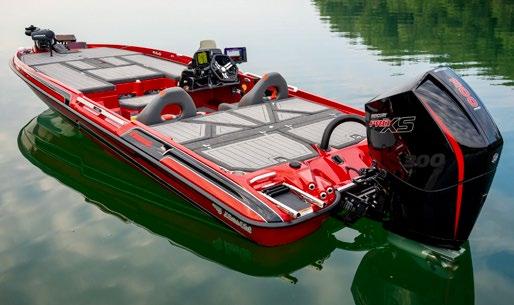
Bass Cat-Puma STS (Soft-Touch-System)
O’Sullivan described the new Puma as longer and wider making for a more comfortable ride without sacrificing performance or speed. This model is from a company that has created numerous innovative concepts in its 50+ years in the business and has accumulated a large following of dedicated owners.
Length: 20’7″
Width: 96″
Dry Weight: 2100 lbs
Mercury 250 ProXS (300HP max)
Two (2) Helix 7 CHIRP GPS
Minn Kota 3 Bank Charger
Hydraulic Jackplate w/ Gauge
Underwater Wake Light
Bass Cat Puddle Light
Talos Lightning Detection
X-Mount Phone Holder
Falcon Predator 21
O’Sullivan named this boat his choice for the rig needed to fish big water
From the Tennessee River to Lake Lanier or even the Great Lakes, Dan puts this affordable tournament-ready model at the top of his list of personal favorites
Length- 21’3”
Width- 99”
Dry Weight- 2215 lbs
250hp Yamaha SHO four-stroke outboard
Dual Console
Humminbird Solix 12 Chirp Mega SI
250+ vendors under one roof make the East Tennessee Fishing Show and Expo a great place to check out new products, or inspect a new boat

Humminbird Solix 10 Chirp Mega SI CHO
Minn Kota Ultrex 112 lb 36v Trolling Motor Marine Master Tandem Trailer w/ 18” Wheels Gauge for Jack Plate
Black Keel Guard
Whether your future goals include fishing on the National, regional or local tournament trail or spending more time with friends and family outdoors, call and speak to the staff at Buck’s Island and let them help you find a boat that fits your fishing or cruising style. Then, go to their website and check their inventory or call and get more information about a particular model. You can also call and order a custom model outfitted with the features you need.
877.314.1237
This is a master recipe for cooking a deer tenderloin in a pan, along with a basic pan sauce to serve it with.

Prep: 10 mins • Cook: 8 mins • Resting Time: 30 mins • Total: 48 mins
• 12 ounces venison tenderloin (both tenderloins from a deer)
• Salt
•
2 tablespoons safflower oil
• Freshly ground black pepper

Pan Sauce
•
•
1 tablespoon safflower oil
1 shallot, minced
• Salt
•
•
•
1/2 cup red wine
1 cup venison or beef stock
2 tablespoon butter, divided
1. Salt the meat well and set aside while you mince the shallot for the pan sauce, or make whatever side dishes you have planned.
2. When you are ready to cook the tenderloins, heat the safflower oil in a pan that will hold the meat — remember they contract when they hit the heat — over high heat. Turn your stove fan on and pat the meat dry with paper towels.
3. Set the tenderloins down in the pan. They will contract immediately. Let them sear hard for 2 minutes, then turn to another side of the meat. Do this once or twice more, depending on how done you like your tenderloin. It’s OK to sear a side more than once if you need to. Move the meat to a cutting board and grind black pepper over it.
4. Add the extra safflower oil to the pan, then the shallots, and sauté until the shallots brown a little. Use a wooden spoon to move the shallots over any browned bits in the pan to lift them off the metal.
5. Add the red wine and let this boil for a few seconds, then add the stock. Sprinkle a little salt over boiling sauce. Let this boil down for a few minutes, until the whole surface of the pan is covered in bubbles, and the wooden spoon leaves a trail when dragged through the center of the pan. Turn off the heat.
6. Swirl in 1 tablespoon of the butter until it incorporates, then the other. Slice the venison into medallions and pour over the sauce. Serve at once.
Notes: Keep in mind this method also works for the tenderloins of pronghorn and caribou. For elk and moose, you will want to increase the cook time by about 1 minute per side, so about 3 to 4 minutes total extra time.
This is the best Canada goose breast recipe if you want to eat it like a steak or a London broil: Reverse seared goose breast, sliced thin and served simply.
Before we go any further, know that this goose breast recipe works with skin-on or skinless goose breast, with Canada geese or any other wild geese — specklebelly, snow, emperor, even swans — as well as with store-bought, farmed geese.
This is a fantastic goose breast recipe if you want to try eating it like a steak. Just be sure to start the cooking very slowly, rest the meat well, then slice thin.
Prep: 10 mins • Cook: 2 hours 15 mins•Total: 2 hours 25 mins
• goose breast, both halves
• Salt and freshly ground black pepper
•
Instructions
1. Salt the goose breasts about an hour before you plan to cook them. Keep them in the fridge. Get your smoker or oven to about 175°F to 200°F. For smokers, I use cherry wood here, but use what you have. If you are cooking sous vide, get the water to 130°F and vacuum seal the goose breasts.
2. Cook the goose, skin side up (whether or not the skin is still there) until the interior hits 120°F to 130°F. I use a probe thermometer to determine this. If you are using sous vide, this will take about 2 hours or so. It takes about the same time in a smoker, depending on the weather and temperature of the smoker.
3. When you are ready to sear, get some oil, duck fat or goose fat hot, almost smoking. Sear the skin side (again, whether the skin is still there or not) hard for about 3 minutes. I like to put a heavy weight, like a bacon press or a small cast iron pan, on the meat to keep it flat.
4. Remove the goose breast, set it skin side up on a cutting board to rest, and grind black pepper over it. Sprinkle some rosemary on it, too. Slice very thin and serve.

Smokeless Portable Fire Pit Thanks to 360° Signature Airflow the Yukon 2 easily sparks up smokeless bright flames and with the removable ash pan allows for easy ash disposal and simple cleanup. The Yukon 2 weighs just 41 pounds and was made to be moved without hassle. The durable 304 stainless steel construction won’t cave in under the pressure of an ultra-hot flame. Accessories available.
Suggested Retail Price: $399.99 www .solostove .com

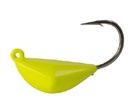

The Balam Coral Reef Sunglasses feature a full, 8-base wrap design that blocks light, tortoise-leopard frames and turquoise arms. The lenses have an Oleophobic coating to reduce scratching and are polarized with LAPIS technology which blocks blue light, making them clearest lenses on the planet. For every Balam sunglass sold, Bajio contributes $20.00 to Oceanus, A.C.(https://oceanus.org.mx/) to cover the cost of planting one coral to help renew the reefs.
Suggested Retail Price: $199-$249.00 www .bajiosunglasses .com

The propane powered Ignite offers two 10,000 BTU burners along with a 2-turn simmer control which allows precise flame adjustment. With a push button ignition, it is fast and easy to start. It features thick-gauge steel construction, a stainless-steel drip tray, adjustable non slip rubber feet to ensure that the stove is always level and dependable latches for secure transportation.
Suggested Retail Price: $154.00 www .eurekacamping .johnsonoutdoors .com
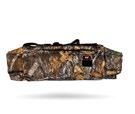
The Patented* high performance inshore Bottom Sweeper Jigs® were Symmetrically designed to resist roll over with an astounding front to rear balance. It has the ability to drop quickly, glide over structure, and stay in place even in a rushing current. Bottom Sweeper Jigs® are handcrafted in the USA and available from 1/4 to 3-ounce sizes.
Suggested Retail Price: $4.99 www bottomsweeperjigs com
The G-Tech Heated Hand Warmer Pouch Stealth x Realtree 3.0. G-Tech features 3M polyfill heatcapture material and a waterproof zipper, as well as an upgraded battery and charger, for superior performance when temperatures drop. The 7.4v rechargeable Lithium battery provides constant heat for up to 12 hours. It is constructed of waterproof 600D Polyester backed with a PVC coating. Available in three Realtree patterns.
Suggested Retail Price: $175.00 www .gtechapparel .com
.50 Caliber Muzzleloader with the VAPR™ Twist. The NitroFire® is available in .50 caliber with a 26” Chromoly steel fluted and tapered barrel and offers a 1:24“ VAPR™ twist barrel. The faster twist helps to stabilize bullets, increase accuracy and expands the bullet options. It also incorporates the Elite XT trigger system for a crisp, clean trigger break and a rebounding hammer and cross block trigger safety
Suggested Retail Price: $699.99 www .traditionsfirearms com/

The Rogue Ridge FG1000 fat tire mountain bike operates with a 1,000-watt motor and a 13-amp hour battery giving power to navigate steep hillsides and it can reach up to 30 mph. It has a range of 50 miles and a charge time of just 2.5 hours. The frame is constructed of tough 6061 aluminum and weighs 66 pounds with a load rate of 350 pounds.

Suggested Retail Price: $4,499.99 www www rogueridge com

Using Merino-X 350 g EXP weight fabric the mid layer Furnace Henley provides lofted insulation and protection. It incorporates a brushed (fleeced) backside to the high loft and interlock knits to provide super-charged insulation without added weight. Because of the merino wool, it is silent and odor free. It is “true to size, has ergonomic cuffs with thumb loops, flatlock seams along with a snap closure, quarter length Henley collar.
Suggested Retail Price: $140-150.00 www .firstlite .com
The Stowaway Travel Rod is a 3-piece multi-action rod system with interchangeable sections including 2 mid-sections, 2 tip-sections and an ergonomic handle. They all break down to store in a crush-proof aluminum travel tube. This design allows anglers to mix and match rod pieces to create 4 different rods with different actions. Available in 7’2” M/MH and 6’8” M/ML.

Suggested Retail Price: $198.00 www .toadfish .com 877.314.1237
The GVDV six-piece hunting knife kit will make life easier in gutting, skinning and processing large game animals. It includes an 8.1” caping knife, 8.7″ hunting knife with gut hook, 9.6″ boning/filet knife, ribcage spreader, gloves, and hard-side case. The knives have 5cr15 stainless steel featuring high strength, hardness, and abrasion resistance. Grooved polypropylene handles with printing cover provide a reliable grip, even when wet.
Suggested Retail Price: $27.99 Website: N/A – On Amazon
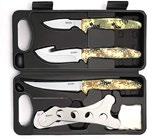
I like ribbon-cuttings! I like groundbreakings too, but groundbreakings are for what you are about to do. Ribbon-cuttings are when we get to celebrate the good work that has been done and get to lay hands on the culmination of a project.
Our staff and previous commissioners have worked hard to lay a solid foundation of public land, boating access, state parks, fishing improvements and other recreational opportunities. I am so appreciative of their quality work, and it drives me to do even more.
Over the past five years, I have had the opportunity to participate in a whole bunch of ribbon-cuttings with Governor Ivey, state legislators, local officials, and our Alabama Department of Conservation and Natural Resources staff. When I started taking inventory of all the work our folks have done to improve recreational access to our woods and waters, I was amazed!


Improving boating access has been a key priority. As the wettest state in America, we have such fantastic waterways and fresh and saltwater fishing in Alabama. People must have
adequate access. Recently, we cut ribbons on new or improved ramps in Demopolis, Orange Beach, Fort Morgan, Bayou la Batre, the Mobile Causeway, Smith Lake, Weeks Bay, Dauphin Island, West Fowl River, and Guntersville. We also have several more ramps where we completed improvement work that didn’t have public openings, but they are no less important to the people who use them.
We have projects underway or planned for Mount Vernon, Lake Martin, Lake Wedowee, Dauphin Island, Mobile, Fairhope, Hale County and many more areas. We are keeping our boat ramp folks in Fisheries on the go!
In conjunction with many partners and the Forever Wild Land Trust, we have added more than 70,000 acres to public ownership all over the state during the past five years. So how big is 70,000 acres you ask? I asked that too.
Sometimes it is hard to put those type numbers in context. The land areas for the cities of Daphne, Spanish Fort, Bay Minette, Foley and a little over half of Fairhope added together are right at 70,000 acres. So, over the last few years, me, you, and
 Commissioner of the Alabama Department of Conservation & Natural Resources
Commissioner of the Alabama Department of Conservation & Natural Resources
your Alabama friends and family now own four and half good-size cities of new land to hunt, hike, and explore. Wow!
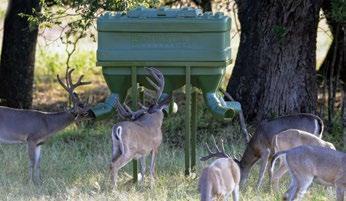
These acquisitions have added new hunting lands to Wildlife Management Areas (WMAs) or Special Opportunity Areas (SOAs) in Dallas, Russell, Butler, Wilcox, Monroe, Colbert, Jackson, Marshall, Shelby, Bibb, Barbour, and Jefferson counties and more. In Coastal Alabama, the large acquisitions in the Grand Bay Savanna, Mobile Delta, and along the Perdido River have added to already great public lands in those areas.
Our newly added 70,000 acres is a good start. Maybe we can double that over the next four years of the Governor Ivey administration.
We have invested millions in our Alabama State Parks. This is where we have seen most of the ribbons cut the past couple of years. Projects at Lake Guntersville, Joe Wheeler, Lakepoint, Oak Mountain, DeSoto, Buck’s Pocket, Cathedral Caverns, Blue Springs, and Roland Cooper State Parks have been well received by the public. The opening of The Lodge at Gulf State Park, the improved Lake Shelby Recreation Area, and the new Learning Campus at Gulf have really set this park up as a standard for what we want to do at all the parks.
We are blessed to live in one of the finest states in America for outdoor recreation. We have some of everything here in Alabama when it comes to enjoying “the Great Outdoors.” However, as our population grows and more people discover outdoor Alabama, we must up our game to make sure our citizens and visitors can continue to enjoy all Alabama has to offer.
Thanks to your votes approving the bond issue for our State Parks during the May primary election, we have projects underway or planned at all of our parks. Over the next three to four years, we will be transforming many of our parks into the first-class facilities we can be proud of, while still protecting the natural beauty and serenity that people seek in our parks.
FROM
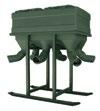



The bond projects will focus on prioritized needs that will yield the greatest return on investment for our State Parks and will make them self-sustaining moving forward. The goals of this bond initiative are to focus on large-scale projects to campground facilities, to build new and renovate older cabins, and to modernize other high-use activity areas. This will be spectacular!
Outside of our State Parks, ADCNR has huge plans to grow outdoor recreation and to use it as a tool to keep and attract talent in our workforce.
We plan to build and improve more boat ramps and to build more trails for hiking, biking, kayaking, cycling, and multi-use trails. We will expand and add amenities at trailheads like secure parking, bathrooms, improved wayfinding signage on the trails, and other enhancements. We are going to upgrade some of our tired, old WMA facilities and Forever Wild properties.
In one of the fastest-growing segments for outdoor recreation, we plan to build additional archery ranges and expand shooting sports facilities. We envision a shooting sports trail, like the Robert Trent Jones Golf Trail, where we can host high school, regional, and national competitions. This area is definitely a growth possibility for Alabama’s sports tourism economy.
Working with Innovate Alabama, an Outdoor Recreation Advisory Committee has been formed to make sure we are working with every group and type of outdoor recreation to make sure no group is left out of these improvements. It is a good time right now for outdoor recreation, and we want to strike while the iron is hot.

I appreciate Governor Ivey’s support for our work at ADCNR, and I am so glad she was reelected for four more years. We have a lot of work planned in that time, and I can’t wait to cut ribbons all over Alabama on great outdoor recreation projects and land acquisitions in the next few years!

More than 200,000 hunters will pursue the abundant game in Alabama this season, which means hunter safety should be at the forefront of any outdoors adventure. The Alabama Department of Conservation and Natural Resources’ (ADCNR) Wildlife and Freshwater Fisheries (WFF) Division would love to see a repeat of the 2021-2022 season, when zero fatalities were reported for hunting accidents.
this season.
BY CHARLES “CHUCK” SYKES Director of the Alabama Division of Wildlife and Freshwater Fisheries (WFF)
Hunter safety is a priority for us at WFF. Thankfully, hunting accidents have been slowly decreasing in numbers for the past several years. Last year was monumental. There were no fatalities in firearms or treestand accidents, and we had fewer treestand accidents than firearms incidents, which is unusual. That’s the first time since WFF began keeping records in 1973 that we have had zero hunting-related fatalities. I certainly hope we can carry this over to
Five treestand accidents and 10 firearms accidents were reported during the 20212022 hunting season. Of the firearms accidents, four were self-inflicted. Those self-inflicted accidents were due to stumbling and falling or the trigger got caught on an object. The key to safety in such situations is to keep the muzzle pointed in a safe direction and be aware of where the muzzle is pointed just in case of an accidental discharge.
Though none were fatal last season, these accidents underscore there’s never a time to get complacent. The 2022-2023 season is, unfortunately, starting off with the same treestand accidents as last year, hunters not wearing a full-body harness and not utilizing a lifeline. So, apparently not all hunters have been heeding our warnings. During the first two weeks of archery season, one hunter fell and

sustained compound fractures of both wrists and another broke both ankles!
Even though the number of treestand accidents is trending in the right direction, we need everyone to remain diligent about treestand safety. Most treestand accidents happen when you’re going up or coming down the tree. Make sure you have a quality safety harness and be sure you remain attached to the tree from the time your feet leave the ground until your feet are back on the ground. This applies to all stands- hang-on type, climbers, and even ladder stands. We also have accidents occurring when hunters are moving a treestand, so be meticulous when putting stands up and taking them down.
All hunters should follow the 12 guidelines for using a treestand safely:
• Always wear a safety harness, also known as a fall-arrest system, when you are in a treestand, as well as when climbing into or out of a treestand. Statistics show that the majority of treestand incidents occur while climbing in and out of a stand.
• A safety strap should be attached to the tree to prevent you from falling more than 12 inches.
• Always inspect the safety harness for signs of wear or damage before each use.
• Follow all manufacturer’s instructions for use of a safety harness and stand.
• Follow the three-point rule of treestand safety. Always have three points of contact to the steps or ladder before moving. This could be two arms holding and one leg stepping on the ladder or one arm and two legs in contact with the ladder before moving. Be cautious that rain, frost, ice or snow can cause steps to become extremely slippery. Check the security of the step before placing your weight on it.
• Always hunt with a plan and, if possible, a buddy. Before you leave home, let others know your exact hunting location, when you plan to return and who is with you.

• Always carry emergency signal devices such as a cell phone, walkie-talkie, whistle, signal flare, PLD (personal locator device) and flashlight within reach even while you are suspended in your fall-arrest system. In the event of an incident, remain calm and seek help immediately.
• Watch for changing weather conditions.
• Always select the proper tree for use with your treestand. Select a live, straight tree that fits within the size limits recommended in your treestand’s instructions. Do not climb or place a treestand against a leaning tree.
• Never leave a treestand installed for more than two weeks since damage could result from changing weather conditions and/or other factors not obvious with a visual inspection.

• Always use a haul line to pull up your gear and (unloaded) firearm or bow to your treestand once you have reached your desired hunting height. Never climb with anything in your hands or on your back. Prior to descending, lower your equipment on the opposite side of the tree.
• Always know your physical limitations. Don’t take chances. Do not climb when impaired by drugs or alcohol or if you’re sick or fatigued. If you start thinking about how high you are, stop climbing.
There are two common denominators with the majority of treestand accidents. They usually happen to seasoned hunters who are not always attached to the tree. It seems like such a
simple fix to me, but some hunters still refuse to do it. Don’t end up a statistic. Follow the safety guidelines above and have a safe hunting season.
Obviously, the word is getting out about our safety outreach, on both treestands and firearms. Hunter education definitely helps, and our PSAs (public service announcements) are helping. For the most part, hunters seem to be more aware of being safe when they’re hunting, and fewer of them are taking unnecessary risks.
However, I do have one more request for all hunters. For those who are exempt and those who have already taken a hunter safety course, take another one. WFF has many in-person as well as online courses available. One of the online courses is even free, so there’s no excuse for not taking it. For more information visit www.outdooralabama.com.
This fine sheepshead took some work, but he was taken from very heavy dock pilings
BY ED MASHBURN Photos by Ed Mashburn
As the year moves along toward winter, one of the most popular fish targeted by inshore anglers is the black and white striped sheepshead. These fish have sets of teeth that only a dentist with a big boat payment each month could love. They put up a strong fight when hooked and sheepshead are delicious when cooked just about any way.
Sheepshead are present in the Gulf of Mexico inshore waters year round, but as the water cools and the days get shorter, a great wave of sheepshead washes into the bayous, creeks, and smaller bays, and anglers can get in touch with these very desirable fish easier than at other times of the year.
Sheepshead are perhaps the most structure oriented fish in Gulf waters. They hold very tight to a wide range of hard structure both as protection and as a source of food. Sheepies are
crustacean eaters, and any kind of smaller life with a hard a hell or soft shell with good-tasting insides will be eaten by sheepies.
An effective way to fire up sheepshead in typical conditions is to use a shovel or other strong edged tool to scrape off barnacles and oysters which live and grow on the structure. As the loosened barnacles and oysters fall off and drift down, they create a feeding activity and make it much easier to get the sometimes very picky sheepshead to commit to a bait offered.
Wooden and concrete dock pilings, bridge pilings, oyster shell beds, old sunken boats- anything which provides shelter and food source will hold sheepies.
Any boat which allows anglers to approach and fish solid structure will make life a lot more productive for sheepshead anglers. Kayaks in particular are perfect fishing craft to allow

anglers to weave in and out of complex and complicated structures to find the best concentration of sheepshead. Fishing for sheepshead from a boat will require the angler to get very close and often in contact with the rough and abrasive structure, so boats that are treasured for their bright, shiny, mirror like finish are not best for sheepshead fishing. Boats which have been through the wars and have scratches to prove it are the preferred craft.
Most sheepshead fishing is done with the bait and line straight up and down. Trying to cast any distance at all is usually not too productive for sheepshead. This is close in, hand to hand combat fishing.
Sheepshead can be caught on artificial lures, but it is not a common occurrence. Live bait is by far the way to go when sheepshead are the target.
Many sheepshead have been caught on live shrimp, and shrimp are a standard bait to be obtained in local bait shops. However, everything else eats shrimp, and bait stealers like pinfish and toadfish can eat up a lot of anglers’ offerings in a short time.
Captain Scott Kennedy founder of Whistlin Waters Kayak Charters out of Gulf Shores, has caught a lot of sheepshead through the years. He says.
“ For live bait, I will go 100% with fiddler crabs if I can. Fiddler crabs are a lot tougher and stay on the hook better than shrimp. I like to catch my own fiddler crabs, but this time of year when cold fronts blow through, the fiddlers bury up and can be hard to find. Most local shops will have fiddler crabs though,” Kennedy said.
Sheepshead are notoriously good at stealing bait, and when they are being very picky, an angler can go through a lot of shrimp or fiddler crabs in a short time. Bring lots of live bait when going after the black and white toothy fish.
As with most fish in the saltwater, sheepshead prefer conditions which give them some water movement. Sheepies don’t bite well most times when the water is flat and dead.
“The biggest thing when fishing for sheepshead is to avoid peak high tide and peak low tide. The water needs to be moving. As long as the water is moving, sheepshead will be there and they will bite,” Kennedy noted.
On a recent sheepshead trip I took with Kennedy, we fished hard for the first hour or so and got a lot of nothing. Even in prime sheepshead territory with traditionally very productive structure, we caught nothing. Then the tide began to move just a whisper and then got stronger, the bite turned on, and Kennedy caught some fine sheepshead- one was a good solid eight pounds or so, and it was delicious the next day fried up right.



Fishing for sheepshead does not require very technical gear- a medium spinning or bait cast rod and reel with 15 pound braid and 20 pound leader will work fine. Sheepshead are strong, powerful fish, and a good stout drag system is needed. These black and white fish will often head right for the thickest, roughest underwater cover when hooked, so rigs need to be strong enough and have enough backbone to stop them.
For terminal gear, Kennedy advised, “I like a small hook- a stout hook in #4 or #5 size in a J hook. I use the least amount of weight possible. Two or three split shot will work well most of the time, but in deeper


water or stronger current I’ll go with more weight. I match the weight to water conditions, but the key is to use the least amount of weight possible.”

And anglers fishing for sheepshead will want to stock up with hooks, swivels, and lots of sinkers. Fishing in the rough conditions sheepshead prefer guarantees that there will be plenty of snagged hooks and lost rigs. Seriously, anglers need to bring more weights and hooks than might seem needed- it will all be needed.

Although sheepshead are not terribly boat shy, too much noise and vibration in the water from a poorly managed boat which bumps into the structure too hard and too often will put the bigger, wiser sheepies off their feed.
Once potentially good sheepshead structure is located, and most of the time, this structure won’t be hard to find, the angler needs to approach the hard stuff quietly and then establish a position alongside the structure. Tying up to the old pilings or other hard structure is a good idea. Anchoring a boat in typical sheepshead territory is a very good way to lodge and loose a boat anchor. For best sheepshead fishing and catching, anglers need to tie up to the structure and fish straight up and down.
Whistlin Waters Charters Whistlin Waters.com Captain Scott KennedyJanuary is a prime month to target trophy speckled trout! courtesy Capt. Kyle Johnson
BY CHRIS VECSEYThe best way to start a new year is on the water. January can be tough at times, but there’s great action inshore and offshore through the month.
You won’t have to go far to capitalize on the action inshore. The best places to kick off the new year are in the coastal rivers and bayous and they’ll offer protection from the elements most days.
Sheepshead and redfish will still be thick on piers, bulkheads and in rocky areas.
For sheepshead, fishing tight to structure with live shrimp or fiddler crabs will do the job.
Reds will hit a lot of options but plastics like the Matrix shad or Slick jr will be top choices. Hardbaits like the Mirrolure 18MR and Yo Zuri Inshore twitchbait are other good picks.
January is one of the top months to target trophy
speckled trout.
“From the inland waters to the Chandeleurs, big trout are all that’s on my mind” says Captain Kyle Johnson with Coastal Waters Outfitters in Biloxi.

When looking for areas to fish, Johnson looks for bait first and foremost. In addition, Unlike most, Johnson likes to focus on shallow water for big trout.

“If the area you’re fishing is devoid of bait, you’re wasting your time. You need plenty of forage and good current,” he said.
“The only way I target these fish is wade fishing and with larger lures and erratic retrieves instead of the ‘deep and slow’ tactic used by most in the winter.” Johnson noted.
Johnson states that while fishing slower retrieves in deep water may be productive in other areas, he’s found that this method works better for bigger fish in
“I like using bigger lures like the Paul Brown Fatboy, Down South Super Model, Mirrolure Provoker and other larger lures that imitate mullet and menhaden,” he said.
Big trout conserve energy this time of year and when they feed, they want bigger meals. Johnson keeps the big bait, big fish mentality through the colder months.
Picking productive times is also a key to success.
“The peak bite will be prefront. These fish feel the pressure changes and will feed heavily in the day or two ahead.” Johnson.added.
Johnson pointed out that fishing the day a front arrives is often much slower and usually takes a couple days to shape up.
Surf fishing will remain decent this month. Pompano action can be consistent if the water temps stay in the low 60s, but whiting, redfish and drum will make up the bulk of catches from the surf.
One of the common mistakes made in surf fishing is assuming one beach is just as good as another. You want to find sections along the surf with significant structures like rips (washouts), deeper troughs and funnel points where the outer bar moves closer to the shoreline.
Bait options vary, with shrimp, sand fleas and mullet being popular. Ghost shrimp, while requiring a bit more work to obtain, are probably the best bet through the colder months.
Around the inlets and the ICW, sheepshead will be a top target. Reds and large drum will be found in the same areas and are a common bycatch while fishing for sheeps.
Fiddler crabs and live shrimp are top baits and should be fished tight to structure. Speckled trout action will remain consistent in the rivers and bayous. Finding areas with strong concentrations of bait will lead to action with specks.

Offshore, live bottom areas like the Trysler Grounds, Yellow Gravel and the Elbow will be good spots for scamp, vermilion snapper and many others. Live baits like pinfish and cigar minnows will do well for scamp. For vermilion snapper, porgies and many other species, a two hook “chicken rig” with small pieces of squid, bonito or mackerel will keep rods bent.
Out a bit deeper, swordfish will be a reliable option when weather allows. Most natural bottom structures in 1100-1400 feet will be good, but finding bait is a top priority. Whole squid, eels or bonito strips will get bit.
January offers a lot of variety for inshore anglers through the panhandle. Throughout Escambia and Pensacola Bay, bull reds will provide action around popular places like Pensacola Pass and three mile bridge. Fish can be found in open water chasing bait schools as well as holding near bridge pilings and nearshore reefs.
Further into the upper bays, slot reds, speckled trout, sheepshead, drum and even striped bass will provide a fun mixed bag. Falling tides are generally best in areas near creek and river mouths. Fish will be feeding on both shrimp and smaller baitfish as they flush out of the dropping tide.
Off the beaches, surf action will be consistent with whiting, redfish and
occasionally flounder. Pompano can be taken but it will depend on the water temps through the month. Passing fronts can cool waters rapidly. Pompano action
Just offshore, blackfin tuna can be a welcomed surprise for pier, kayak and boat anglers as the powerful and tasty fish pursue bait further into the shores this time of year. Trolling plugs like the Yo Zuri Crystal Minnow or Rapala X Rap will produce nearshore tunas. Live baiting is also successful but covers less water.
Blackfin can also be taken out near the edge in 200-300 feet of water through the month. Usually, chunking with cut menhaden or bonito is the best method while drifting or holding over bottom structures.
While offshore, expect scamp, lane and vermilion snapper, porgies, amberjack and others to provide plenty of sore arms. Many prized bottom species will be available on closer structures and in shallower water. Target depths can be anywhere from 80 to over 300 feet.
The Okaloosa County FADs may produce tunas and the occasional wahoo when water temps are high enough. Monitor a satellite imaging service like Hilton’s Realtime-Navigator for updates on the offshore conditions.

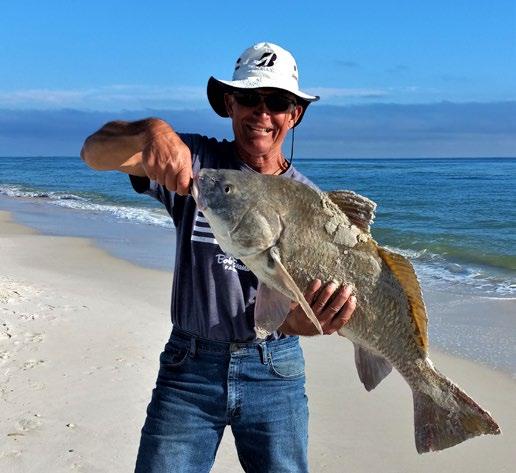
As months come and go along the Emerald Coast, January brings many unique challenges for shore bound anglers trying to be successful. Climatic averages of air and water temperatures are near their lowest for the year, compounded by the shortness of daylight hours.
days while high pressure settles in. When we are lucky, anglers may see a day or two of relatively clear skies, light winds and mild temperatures, allowing a “window” for productive fishing before the next front.
BY DAVID THORNTON Photos by David ThorntonWe also experience some “wild weather” periods as the contrast between the colder and drier air over the continent clashes with the relatively warmer, moist air over the Gulf of Mexico. Every few days we can expect another storm system to bring in increasing temperatures with the wind, clouds and rain. Behind the front, winds usually swing to the north as temperatures plummet for a few
Shallow back bay and surf zone water temperatures may get so cold as to no longer support most of our native fish species this month. More fish are drawn to the relatively deeper and warmer Gulf (about 65 degrees). Even there water temperature may dip below 60 degrees at times so catching fish may be even more of a challenge than in other months. Water this cold slows the metabolism of our coastal species to the point they may only feed once or twice a week. That means timing
becomes most critical, as does presentation. Morning low tides are the norm in January, with NEAP tide periods around the 12th and 26th . The rising tide through late afternoon often presents anglers with increasing opportunities to find fish feeding closer to shore.
In mid-winter, from-shore angling options are pretty much reduced to three target species. Most anglers choose quantity over quality in their fishing pursuits and concentrate on pompano with set rigs baited with fresh shrimp and/or Fishbites.
Probably the most widely used style of terminal rig are the ever popular double dropper “pompano rigs” with near endless choices of brightly colored floats or beads. Experimentation is often a key to success this time of year. Winter pompano are often solitary, but they may still travel in loose schools. Once you are getting bites, or see someone else catching fish, it is best to adjust your spread to focus on what is working for that day and time. Pompano anglers commonly debate setups, presentations, colors, and baits as the preferences of the feeding fish seem to change as often as the weather, water and tide conditions.
Typically the rigs are baited with pieces of fresh shrimp, and/or Fishbites. Ghost shrimp work even better, though they are soft and more challenging to keep on the hook. Magic Thread is a product that helps keep the bait on the hook longer, especially on long casts with heavy weights. At times a single hook presentation may work better, either as a single drop or Fishfinder rig. These presentations work great with lighter class tackle fished closer to shore. They also increase the odds of catching “whiting”. As desirable a panfish for many anglers as pompano, and often more numerous.
Winter is also the season for coastal sheepshead fishing to come into its own. Mainly because there are not so many other species in the water to take the bait which often must be meticulously presented to these wary gamefish. Plus the metabolism of sheepshead seems to be more tolerant of cold water.
Sheepshead tend to feed more often and in a wider set of conditions than other species still present. They might just as well be found in fairly shallow water around jetties and piers, as in deeper water of the passes or the seaward end of the beach piers.
They are spunky fighters for their size, commonly weighing two to six pounds or even bigger. That is why anglers often use heavy tackle, maybe even “too heavy’” so as to discourage them from biting in the first place.
Sheepshead are omnivorous feeders, meaning they eat both vegetation and animals (invertebrates). They are most commonly caught on live shrimp (penaeid), as dead shrimp only works rarely but sheepshead will eat a variety of other offerings including fiddle crabs, ghost shrimp, mole crabs (sandfleas), hermit crabs, oysters, clams and mussels, and even sea worms.
Inter-school competition is often a factor to get these finicky fish to bite. Hook size along with other factors contributing to a ‘natural’ presentation (weight and line size) are other keys to get them to bite. Once on the hook, sheepshead instinctively dive for structure in a series of short-lived spurts of energy but they tire quickly and thus may be landed on even light tackle with the assistance of a net. It is often a balance of how heavy tackle the angler must employ to keep the sheepshead away from sharp barnacles, and getting them to bite in the first place.
Large, solitary black drum (15 to 30 pounds) are the primary “trophy” species of the surf zone in January. They constantly prowl the surf zone
looking for pretty much anything edible. They seem to prefer dining on invertebrates over cut fish. So crabs and whole shrimp are the most commonly used baits. But drum will eat tiny offerings intended for smaller panfish like “whiting” too.
Even in water this cold, black drum have an excellent sense of smell due to the numerous barbels located under the mouth. They cover a lot of sea bottom, and can find pieces of shrimp or just Fishbites, especially the “fast release” formula. Look for drum along the deeper edges of sandbars in any conditions. Sight does not seem to play as large a part for them to locate your bait as smell seems to. So this makes them a viable target species in dingy water, or even at night.
Anglers may use longer rods like those used for large (bull) redfish . Though this time of year, most reds of breeding age are out deeper in the Gulf. Still, occasional loner redfish of various sizes may be caught with the same tactics, but are harder to target successfully due to their lack of numbers.
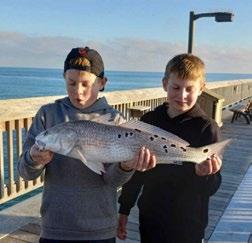
This is mostly a catch and release fishery as drum (like redfish) over 30 inches are considered “broodstock” and not as good as table fare as smaller versions. Also, large black drum have a notorious reputation for harboring “spaghetti worms” (a parasite) in their flesh. Though still edible, this lessens the desirable food factor for many folks.
Schooling fish like blues, Little Tunny (“bonita”), or even speckled trout may be caught in January in certain locations and circumstances with proper tackle and techniques. Jigs, small spoons and plugs work well for bluefish and bonita from the Gulf beach piers along the Florida Panhandle. And hard baits like MirrOdine, small Rapalas, or Yozuris, and even topwater plugs work for speckled trout along the inshore beaches farther west into coastal Mississippi. With waders, a determined angler can fish the passes during the afternoon incoming tide to target trout even after sundown.
Wintertime often brings pause to shore bound fishing for many folks, and most certainly extreme conditions offer more challenges compared to the other seasons. But those prepared for the elements and persistent in their efforts are oftentimes rewarded with good fishing experiences as they enjoy their great days outdoors.
When the schools are located, striped bass and hybrids can come in fast .

Just because it’s cooler doesn’t mean the fish have moved south. They still bite if you work a bit to find them. Joe Dunn, from Dunn’s Sport Shop says that the best technique for cold weather crappie at Miller’s Ferry is bottom bouncing for them.
Put a 1 ounce sinker at the end of the line and then put a 1/0 hook about 18 inches above the sinker. Add a live minnow or a soft tube body on the hook, and then tip the hook with a minnow. The preferred colors of the plastic jig will vary from day to day, but sometimes having the little extra attraction of the soft plastic jig can make a big difference. Bounce this rig right on the bottom and feel for bites which may be pretty soft this time of year.
One thing that Dunn advises crappie anglers is to be aware of is that if a lot of current is moving through the lake, the crappie may relocate to the larger sloughs and creek to get out of the strong current.
“The largemouth bass will be found not too far from their spawning areas, but they won’t be up in spawning water yet. Secondary ledges and points up the big sloughs can be good. In January there can be a good crank bait, spinnerbait and chatterbait bite in eight to ten feet of water,” Dunn said.
If we get a few warm January days, the bass will pull a little shallower, but they are waiting for steady warmer water in their spawning areas.
As far as colors and patterns for Miller’s Ferry cool weather bass,
“Ninety percent of the time here at Miller’s Ferry, bass lures need to be in some kind of shad color and pattern. Toward the end of the month and going into February and March, crawfish will start to emerge, and then a crawfish pattern is good,” Dunn recommended.
According to Randy Jackson of Riverside Fly Shop, cool weather doesn’t bother the rainbow trout at all, they like cold water and cool weather.
in January, there can be a good midge hatch, and often stone flies and blue wing olives will also start coming off. This can produce some very good fly fishing for the rainbows.
“From January to March to a good time for nymph fishing on the Sipsey Fork. The nymphs all have different configurations, and the flies to match them have bread heads and some have wire to help sink them quickly. Other natural imitations sink slower. The fish will tell an angler what sink rate and color they want,” he said.
One good thing about fishing the cold waters of Sipsey Fork is that when the air temperatures get as cold as they ever do in Alabama, the water is still the same temperature it was in summer. The trout don’t care how cold it is, either.
The river stages and water flow will vary depending on the amount of rainfall and water released from the Smith Lake dam to maintain the desired lake level above.
Spinning gear anglers will have good luck with bubble-rigs using the same flies that fly rod anglers use. Four-pound test line works best for the sharp-sighted rainbow trout.
Riverside Fly Shop will be running float and wade trips all through
January, and since the river is stocked well every month, there will be fish eager to bite.
North winds can produce some interesting Delta fishing conditions, but the fish are still there and they’ll still bite.
“What we’re looking at, if the upper and middle Delta has flood waters, the bite shuts down. On the lower Delta, cold fronts combined with strong north winds can produce phenomenal fishing because the low waters concentrate the fish in creeks adjacent to the bays. South of Gravine Island is a maze of creeks which will help concentrate the bass. Navigation at this time can be a problem, but the low water helps show anglers where the deepest water of the creeks and channels lies,” advises experienced Delta angler and fishing uide Captain Wayne Miller.
In January the water will be in the 50s, and medium to deep diving crawfish pattern crankbaits can be very good. Plugs that run three to eight feet deep are good. Anglers might try a jig and shaky head for a slower presentation. Darker colors are good and work well most days.
Anglers should look for creeks with deeper water and some tidal movement.
The cooler weather generally means fewer anglers on the water and less pressured fish. This can be a very good thing at big old Lake Guntersville. In the cool conditions of January, bass anglers should work Guntersville along the bigger creek channels and the old grass line. Anywhere that narrows the creeks down and creates pinch points is a good place to look.
“In January, there will be a pretty good crank bait bite, Rat-L-Traps will be good, and jerk baits will also work. These hard baits should have some red or chartreuse accents on them. Red is always good at Guntersville,” Captain Jake Davis from Mid-South Bass Guide Service explained.
Davis pointed out that the bass will generally be holding in eight to twelve feet of water but that there will be some shallow bass in Guntersville at nearly all times and all conditions.
Crappie will be schooling up on the bridges- anglers can have good luck with big crappie using small jigs and live minnows around the bridge structures. Fish the shadow lines of the bridges.
A good thing about January fishing on Guntersville is that most fishing trips won’t need to start until late in the morning. Captain Jake advises us that this time of year, afternoon fishing after the sun gets up and warms the water a little is best.
Hawks Fishing Guide Service guide Captain Sam Williams said that being flexible in colors is one of the keys for success in January
“1/16 ounce jigs in chartreuse, pink and white are all good colors to use, but each day is different, and the bigger fish will soon show their preference for color. Slow trolling with multiple rigs is probably the best way to find where the crappie are holding now,” Williams noted.
Anglers should look for the best concentrations of crappie in Sandy Branch, Taylor Creek, White Oak Creek, Barber Creek, and Cowwikee Creek. All of these creeks offer lots of cover for crappie- work the dropoffs and ledges in these creeks. 877.314.1237
White bass will be very good in the open main lake body. Try trolling with deep running crankbaits to find the actively feeding schools, but be ready. Very often some very big hybrids and even some really big stripers will be mixed in with smaller white bass.
Slowly worked soft plastics will be best for bass on Eufaula right now. The bass will be bunched up in creek channels, so when they are found, it can be very good fishing.
Although the calendar says it’s winter, here in the Deep South our springtime fishing starts early.
“About the second week of January, we start our spring season. We will be long-line trolling for some great crappie,” says noted Weiss Lake guide Captain Lee Pitts.
The lake is still at a low-winter level, so the fish are funneled into the bigger creeks and tributaries to the main lake body. The crappie are getting ready to spawn. Big Creek, Cowan Creek, Spring Creek and Little River are some places to look for early season crappie.
“The crappie will winter here in these creeks, and we’ll catch crappie fairly shallow water, five to eight feet deep,” Pitt said.
Pitts likes 1/12 oz Bobby Garland Mo-Glo jig heads with Baby Shad Swimmer soft plastic bodies.
“Don’t move the jigs too fast or with too much action.” Blue Grass, Ice Out, and Monkey Milk are all good crappie jig colors,” he advised. Weiss bass are generally slow and lethargic in January, but on warm days, they can move to four to six feet of water with wood cover, and they will be active then.
“Anywhere there’s riprap in the water, that’s a good place to find winter bass,” he said.
Both spots and largemouths will be on roadbeds, bridges with riprap, and shad pattern crank baits are good. This is also a good time for slowrolled spinner baits worked around the rock structure.
Fishing guide and Captain Brian Barton says that to find the biggest catfish, anglers will need to use electronics to find the deep-water holding cats, these will be fish in 60 to 70 feet of water. Drop a skipjack or big chunks of shad to the deep fish and give them time.
Finding schools of shad is crucial this time of year- the fish we’re after will be around the shad. Most shad schools will be holding at 45-55 feet of water and the bigger fish will be working below them.
Fishing sunny bluffs- mostly on the north side of the lake- can be very good in January. The sun will warm up the water on these bluffs, and this can draw the big fish to the warmer water to feed.
Even if the really big catfish are hard to find and catch this time of year, anglers can count on catching an ice chest full of delicious cold-water catfish below the dams now.
Bill Goodroe of Wilderness Way in Crawfordville, Florida says that success Wakulla River fishing is “It’s a matter of getting on the river and getting after it.”
Warm January days can be more pleasant for anglers who go on the Wakulla, and January is pre-spawn for the bass there, so they are usually feeding.
Goodroe recommends frogs, trick worms, and particularly wacky worm rigs drifted past the massive weed beds and drop offs.

The water level of the river can vary somewhat with the state of the tide down at St. Mark’s where the river joins the St. Mark’s River emptying to the Gulf. The usual best tides to fish up on the river will be spring tides where the water backs up all the way past the Highway 98 Bridge. A falling high tide can be very good, also.
Bass anglers who fish below the Highway 98 Bridge should expect to encounter some good sheepshead and redfish which will jump on live shrimp or soft plastic jigs.
“January is traditionally a good month for the big bass. They are feeding up for the spawn which begins here in February. Fishing in six to twelve feet of water with big live shiners can be good.”says Jeff DuBree of Whippoorwill Lodge on Lake Talquin.
The bass at Talquin will be moving up in the creeks by the end of the month, and anglers can have good results fishing with spinnerbaits and swim jigs.
Crappie will be very good in January, also. Anglers looking to fill the ice chest with big slabs should try trolling in the mouths of creeks. A variety of 1/16 oz. jigs in different colors will work well.
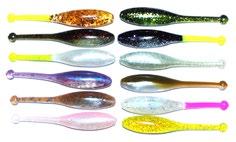
The weather will be the determining factor of where the crappie will be. If we have a warm, mild winter, the crappie will go on the spawning beds earlier in the month. The traditional hot months for crappie spawning on Talquin ranges from early February to late March.
Catfish will be consistently good at Talquin in January in deeper water.

Capt. Sam Williams Hawks Fishing Guide Service 334-355-5057 www.hawksfishingguideservice.com
Capt. Lee Pitts 256-390-4145 www.pittsoutdoors.com
Randy Jackson Riverside Fly Shop 17027 Hwy 69N Jasper, AL 256-287-9582 Riversideflyshop.com

Joe Dunn Dunn’s Sports 334-636-0850 33356 Highway 43, Thomasville, Al

Capt. Brian Barton 256-412-0969 Brianbartonoutdoors@aol.com
Capt. Jake Davis
Mid-South Bass Guide Service 615-613-2382 www.midsouthbassguide.com
Bill Goodroe\Wilderness Way 850- 877-7200 3152 Shadeville Road Crawfordville, FLA 32327
Captain Wayne Miller Mobile-Tensaw Delta Guide Service 251-455-7404 Millewa12000@yahoo.com
Jeff DuBree Whippoorwill Lodge 850-875-2605 Fishtalquin@gmail.com
www.pureflats.com
AM 11:54 AM 12:57 PM 1:55
2:00 AM 3:00 AM 4:00 AM 4:59 AM 5:55 AM 6:47 AM 7:34 AM 8:15 AM 8:50 AM 9:22 AM 9:50 AM 10:16 AM 10:42 AM 11:09 AM 11:38 AM 12:10 PM 12:49 PM 1:38 PM 2:35 PM 3:44 PM 4:59 PM 6:15 PM 7:29 PM 8:39 PM 9:46 PM 10:50 PM 11:52 PM --:-12:53 AM 1:54 AM 2:53 AM
7:36 AM 8:22 AM 9:10 AM 10:00 AM 10:51 AM 11:43 AM 12:33 PM 1:22 PM 2:08 PM 2:51 PM 3:33 PM 4:14 PM 4:55 PM 5:37 PM 6:23 PM 7:12 PM 8:08 PM 9:09 PM 10:14 PM 11:21 PM --:-12:26 AM 1:26 AM 2:22 AM 3:13 AM 4:00 AM 4:47 AM 5:33 AM 6:19 AM 7:07 AM 7:56 AM

07:06 PM / 1.19 07:32 PM / 1.30 08:09 PM / 1.34 08:53 PM / 1.36 09:40 PM / 1.35 10:27 PM / 1.34 11:09 PM / 1.31 11:47 PM / 1.25 12:20 AM / 1.14 12:49 AM / 0.97
01:15 AM / 0.75 01:24 AM / 0.50 06:48 PM / 0.51 06:02 PM / 0.68 05:53 PM / 0.91 06:14 PM / 1.15 06:53 PM / 1.36 07:46 PM / 1.53 08:48 PM / 1.66 09:53 PM / 1.72 10:54 PM / 1.69 11:50 PM / 1.54 12:41 AM / 1.28 01:27 AM / 0.92 02:04 AM / 0.53 05:57 PM / 0.49 05:16 PM / 0.72 05:10 PM / 0.95 05:32 PM / 1.11 06:09 PM / 1.19 06:55 PM / 1.23
06:24 AM / -0.37
06:59 AM / -0.56
07:40 AM / -0.67 08:22 AM / -0.74 09:03 AM / -0.79 09:41 AM / -0.81
10:14 AM / -0.82
10:41 AM / -0.80 11:01 AM / -0.74 11:14 AM / -0.62 11:17 AM / -0.46
11:10 AM / -0.26 10:52 AM / -0.06
10:01 AM / 0.10 03:58 AM / -0.06 04:44 AM / -0.32 05:47 AM / -0.56 06:54 AM / -0.78 07:57 AM / -0.97 08:53 AM / -1.11 09:44 AM / -1.16 10:28 AM / -1.08 11:05 AM / -0.88 11:28 AM / -0.58 11:14 AM / -0.24 10:17 AM / 0.02 09:01 AM / 0.10 04:05 AM / -0.16 04:54 AM / -0.39 05:49 AM / -0.55 06:43 AM / -0.64
05:40 PM / 1.02 06:13 PM / 1.12 06:56 PM / 1.18 07:43 PM / 1.19 08:32 PM / 1.18 09:19 PM / 1.17 10:03 PM / 1.13 10:42 PM / 1.07 11:17 PM / 0.97 11:49 PM / 0.83
12:17 AM / 0.65 05:58 PM / 0.45 12:27 AM / 0.44 05:03 PM / 0.53 04:44 PM / 0.68 04:48 PM / 0.85 05:10 PM / 1.02 05:50 PM / 1.17 06:44 PM / 1.29 07:47 PM / 1.37 08:50 PM / 1.42 09:48 PM / 1.39 10:41 PM / 1.27 11:32 PM / 1.07 12:20 AM / 0.80 01:03 AM / 0.50 04:31 PM / 0.47 03:44 PM / 0.68 03:44 PM / 0.89 04:09 PM / 1.03 04:46 PM / 1.11 05:33 PM / 1.13
05:49 AM / -0.28
06:12 AM / -0.45
06:45 AM / -0.55

07:23 AM / -0.61
08:03 AM / -0.63 08:42 AM / -0.64 09:18 AM / -0.63 09:46 AM / -0.59 10:03 AM / -0.53 10:08 AM / -0.43 10:01 AM / -0.32 09:48 AM / -0.18 09:15 PM / 0.42 09:26 AM / -0.05
08:26 AM / 0.05 04:50 AM / -0.06 04:50 AM / -0.28 05:32 AM / -0.50 06:22 AM / -0.69 07:14 AM / -0.84 08:06 AM / -0.94 08:55 AM / -0.95 09:40 AM / -0.87 10:17 AM / -0.69 10:33 AM / -0.43 10:00 AM / -0.16 09:07 AM / 0.04 08:00 AM / 0.11 03:59 AM / -0.05 04:30 AM / -0.25 05:13 AM / -0.39 05:56 AM / -0.49
07:26 PM / 1.28 07:59 PM / 1.41 08:42 PM / 1.47 09:29 PM / 1.48 10:18 PM / 1.48 11:05 PM / 1.46 11:49 PM / 1.42
12:28 AM / 1.34 01:03 AM / 1.22 01:35 AM / 1.04 02:03 AM / 0.81 07:44 PM / 0.56 02:13 AM / 0.55 06:49 PM / 0.67 06:30 PM / 0.85 06:34 PM / 1.06 06:56 PM / 1.27 07:36 PM / 1.46 08:30 PM / 1.61 09:33 PM / 1.72 10:36 PM / 1.77 11:34 PM / 1.73 12:27 AM / 1.59 01:18 AM / 1.34 02:06 AM / 1.00 02:49 AM / 0.63 06:17 PM / 0.58 05:30 PM / 0.85 05:30 PM / 1.11 05:55 PM / 1.29 06:32 PM / 1.39 07:19 PM / 1.42
07:21 AM / -0.35
07:44 AM / -0.56 08:17 AM / -0.69 08:55 AM / -0.76 09:35 AM / -0.79 10:14 AM / -0.80 10:50 AM / -0.79 11:18 AM / -0.74 11:35 AM / -0.66 11:40 AM / -0.54 11:33 AM / -0.39 11:20 AM / -0.23 10:47 PM / 0.52 10:58 AM / -0.06
09:58 AM / 0.06 06:22 AM / -0.07 06:22 AM / -0.35 07:04 AM / -0.63 07:54 AM / -0.87 08:46 AM / -1.06 09:38 AM / -1.17 10:27 AM / -1.19 11:12 AM / -1.09 11:49 AM / -0.87 12:05 PM / -0.54 11:32 AM / -0.20 10:39 AM / 0.05 09:32 AM / 0.14 05:31 AM / -0.06 06:02 AM / -0.31 06:45 AM / -0.49 07:28 AM / -0.61
Su
06:38 PM / 0.94 07:16 PM / 1.03 07:50 PM / 1.08 08:21 PM / 1.10 08:41 PM / 1.10 08:33 PM / 1.09 08:54 PM / 1.08 09:25 PM / 1.05 09:59 PM / 0.99 10:34 PM / 0.91 11:05 PM / 0.79 11:20 PM / 0.63 03:54 PM / 0.48 11:06 PM / 0.46 02:20 PM / 0.63 02:54 PM / 0.81 03:36 PM / 0.96 04:37 PM / 1.08 07:01 PM / 1.20 07:45 PM / 1.30 08:26 PM / 1.34 09:11 PM / 1.30 10:06 PM / 1.19 11:07 PM / 1.02 11:05 PM / 0.80 02:31 PM / 0.39
01:49 AM / 0.57 02:54 PM / 0.55 08:59 PM / 0.43 03:22 PM / 0.70 03:54 PM / 0.82 04:40 PM / 0.89 05:53 PM / 0.95 06:52 PM / 1.00
04:30 AM / -0.05 05:03 AM / -0.18 05:34 AM / -0.25 06:05 AM / -0.27 06:38 AM / -0.25 07:27 AM / -0.21 08:48 AM / -0.17 09:43 AM / -0.13 10:29 AM / -0.07 11:09 AM / 0.01 10:37 AM / 0.13 07:19 AM / 0.20 06:56 AM / 0.24 06:41 PM / 0.38 06:44 AM / 0.26 04:04 AM / 0.18 04:21 AM / -0.00 04:41 AM / -0.18 05:02 AM / -0.33 05:28 AM / -0.42 06:02 AM / -0.46 06:42 AM / -0.42 07:33 AM / -0.32 08:39 AM / -0.17 09:12 AM / 0.00 09:16 AM / 0.19 04:54 PM / 0.33 06:31 AM / 0.25 06:39 PM / 0.40
05:46 AM / 0.23 05:34 AM / 0.15 03:15 AM / -0.02 04:04 AM / -0.14 04:45 AM / -0.21

06:27 PM / 1.14
06:59 PM / 1.26
07:42 PM / 1.31
08:30 PM / 1.32
09:20 PM / 1.32
10:06 PM / 1.32
10:45 PM / 1.30
11:17 PM / 1.25
11:44 PM / 1.14
12:07 AM / 0.97
12:26 AM / 0.74
12:19 AM / 0.47
06:04 PM / 0.44
05:13 PM / 0.61
05:10 PM / 0.82
05:36 PM / 1.03
06:23 PM / 1.22 07:24 PM / 1.39 08:29 PM / 1.53
09:33 PM / 1.63
10:32 PM / 1.63
11:26 PM / 1.50
12:17 AM / 1.25
01:08 AM / 0.89
02:09 AM / 0.49
04:31 PM / 0.35
03:57 PM / 0.64
04:10 PM / 0.89
04:44 PM / 1.05
05:32 PM / 1.13
06:30 PM / 1.16
04:49 AM / -0.42
05:32 AM / -0.60
06:19 AM / -0.69
07:11 AM / -0.73
08:06 AM / -0.74
08:56 AM / -0.76
09:36 AM / -0.76
10:06 AM / -0.75
10:26 AM / -0.70
10:37 AM / -0.60
10:40 AM / -0.45
10:31 AM / -0.26
10:00 AM / -0.07
08:29 AM / 0.05 03:07 AM / -0.14
03:44 AM / -0.41 04:40 AM / -0.63 05:46 AM / -0.83 06:54 AM / -0.99
07:59 AM / -1.11 08:57 AM / -1.16 09:45 AM / -1.10 10:23 AM / -0.92 10:47 AM / -0.62
10:46 AM / -0.27 09:53 AM / 0.04 11:54 PM / 0.06
02:16 AM / -0.24 03:24 AM / -0.47 04:23 AM / -0.60 05:23 AM / -0.67
05:54 PM / 0.56
06:26 PM / 0.62
07:09 PM / 0.64
07:57 PM / 0.65 08:47 PM / 0.65 09:33 PM / 0.65 10:12 PM / 0.64 10:44 PM / 0.61

11:11 PM / 0.56 11:34 PM / 0.47 11:53 PM / 0.36 11:46 PM / 0.23 05:31 PM / 0.21 04:40 PM / 0.30 04:37 PM / 0.40 05:03 PM / 0.51 05:50 PM / 0.60 06:51 PM / 0.68 07:56 PM / 0.75 09:00 PM / 0.80 09:59 PM / 0.80 10:53 PM / 0.74 11:44 PM / 0.61
12:35 AM / 0.44 01:36 AM / 0.24 03:58 PM / 0.17 03:24 PM / 0.31 03:37 PM / 0.44 04:11 PM / 0.51 04:59 PM / 0.55 05:57 PM / 0.57
04:15 AM / -0.14 04:58 AM / -0.20
05:45 AM / -0.23 06:37 AM / -0.24 07:32 AM / -0.24 08:22 AM / -0.25 09:02 AM / -0.25 09:32 AM / -0.25 09:52 AM / -0.23 10:03 AM / -0.20 10:06 AM / -0.15 09:57 AM / -0.09 09:26 AM / -0.02 07:55 AM / 0.02 02:33 AM / -0.05 03:10 AM / -0.13 04:06 AM / -0.21 05:12 AM / -0.27 06:20 AM / -0.33 07:25 AM / -0.37 08:23 AM / -0.38 09:11 AM / -0.36 09:49 AM / -0.30 10:13 AM / -0.20 10:12 AM / -0.09 09:19 AM / 0.01 11:20 PM / 0.02
01:42 AM / -0.08 02:50 AM / -0.15 03:49 AM / -0.20 04:49 AM / -0.22
04:37 PM / 1.18
04:57 PM / 1.28
05:33 PM / 1.31
06:15 PM / 1.31 06:59 PM / 1.28 07:44 PM / 1.25
08:26 PM / 1.21 09:05 PM / 1.17 09:39 PM / 1.10 10:08 PM / 1.01 10:30 PM / 0.87 10:39 PM / 0.68 03:39 PM / 0.50 09:56 PM / 0.45 03:12 PM / 0.70 03:06 PM / 0.91
03:26 PM / 1.12 04:05 PM / 1.31
04:56 PM / 1.45 05:54 PM / 1.54
06:54 PM / 1.57 07:54 PM / 1.52 08:50 PM / 1.39 09:39 PM / 1.17
10:12 PM / 0.89
10:15 PM / 0.57
02:41 PM / 0.39 09:48 PM / 0.28
02:27 PM / 0.62
02:19 PM / 0.84
02:45 PM / 0.99
03:29 PM / 1.07
04:21 PM / 1.09
03:48 AM / -0.17
04:19 AM / -0.39
04:54 AM / -0.55
05:30 AM / -0.65
06:07 AM / -0.70 06:45 AM / -0.70
07:21 AM / -0.67 07:52 AM / -0.60 08:15 AM / -0.49 08:27 AM / -0.35 08:14 AM / -0.18 07:42 AM / -0.01 07:16 AM / 0.13 07:29 PM / 0.44 06:41 AM / 0.23 02:16 AM / 0.12 02:18 AM / -0.18 02:51 AM / -0.47 03:37 AM / -0.72 04:31 AM / -0.91 05:29 AM / -1.02 06:28 AM / -1.02 07:24 AM / -0.92 08:14 AM / -0.71 08:51 AM / -0.43 06:58 AM / -0.14 06:31 AM / 0.03 06:54 PM / 0.22 06:01 AM / 0.10 02:01 AM / -0.10 02:33 AM / -0.35 03:11 AM / -0.54 03:51 AM / -0.66
05:54 PM / 1.05
06:19 PM / 1.17
06:50 PM / 1.23
07:27 PM / 1.25 08:08 PM / 1.25 08:50 PM / 1.23 09:30 PM / 1.20 10:08 PM / 1.14 10:43 PM / 1.05 11:14 PM / 0.91 11:43 PM / 0.72
12:06 AM / 0.49 04:34 PM / 0.38 04:11 PM / 0.54 03:58 PM / 0.75 04:26 PM / 0.96 05:14 PM / 1.16 06:11 PM / 1.33 07:12 PM / 1.45 08:16 PM / 1.52 09:21 PM / 1.49 10:24 PM / 1.37 11:24 PM / 1.15
12:18 AM / 0.85 01:11 AM / 0.49 03:19 PM / 0.31 02:39 AM / 0.14 03:18 PM / 0.55 03:26 PM / 0.76 03:54 PM / 0.92 04:44 PM / 1.01 05:44 PM / 1.06
04:23 AM / -0.35
04:58 AM / -0.54
05:37 AM / -0.66
06:18 AM / -0.71 06:59 AM / -0.73 07:38 AM / -0.73 08:12 AM / -0.72 08:37 AM / -0.68 08:52 AM / -0.61 09:00 AM / -0.52 09:06 AM / -0.39 09:07 AM / -0.24 08:41 AM / -0.10
07:42 AM / -0.01 03:48 AM / -0.11 03:47 AM / -0.38 04:15 AM / -0.64 04:57 AM / -0.86 05:47 AM / -1.04 06:40 AM / -1.14 07:32 AM / -1.16 08:21 AM / -1.08 09:03 AM / -0.88 09:31 AM / -0.60 09:25 AM / -0.28 08:39 AM / -0.02 09:20 PM / 0.10 06:29 AM / 0.05
02:27 AM / -0.18 03:12 AM / -0.43 03:55 AM / -0.60 04:36 AM / -0.69
06:38 PM / 1.31
07:12 PM / 1.48
07:50 PM / 1.57
08:30 PM / 1.60 09:11 PM / 1.59 09:51 PM / 1.56

10:31 PM / 1.50 11:07 PM / 1.40 11:41 PM / 1.27
12:11 AM / 1.08
12:36 AM / 0.83
12:43 AM / 0.54
06:59 PM / 0.32
05:17 PM / 0.53
05:11 PM / 0.82
05:37 PM / 1.12
06:19 PM / 1.40
07:12 PM / 1.64 08:11 PM / 1.81 09:12 PM / 1.88 10:12 PM / 1.84 11:10 PM / 1.66 12:05 AM / 1.35 12:57 AM / 0.93 01:46 AM / 0.45 04:27 PM / 0.20 03:45 PM / 0.57 04:09 PM / 0.89 04:50 PM / 1.12 05:39 PM / 1.25 06:31 PM / 1.32
-0.97 09:02 AM / -0.90 09:34 AM / -0.80
10:00 AM / -0.67
10:14 AM / -0.49
10:09 AM / -0.29
09:30 AM / -0.09
07:27 AM / 0.01
03:45 AM / -0.23
03:45 AM / -0.61 04:20 AM / -0.97
05:06 AM / -1.27 05:57 AM / -1.50
06:52 AM / -1.61 07:47 AM / -1.60 08:42 AM / -1.45 09:34 AM / -1.18 10:16 AM / -0.80 10:32 AM / -0.37 09:24 AM / 0.00
02:20 AM / -0.03
02:48 AM / -0.44 03:31 AM / -0.76
04:13 AM / -0.97 04:54 AM / -1.09
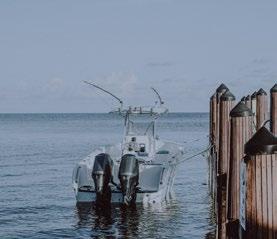
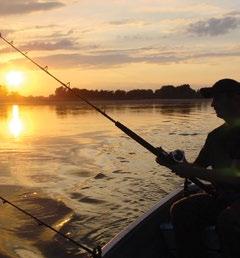
05:10 PM / 1.56
05:52 PM / 1.70
06:36 PM / 1.79
07:22 PM / 1.84
08:10 PM / 1.86
08:55 PM / 1.86
09:38 PM / 1.84
10:20 PM / 1.79
11:06 PM / 1.69
11:56 PM / 1.53
12:46 AM / 1.33
01:33 AM / 1.07 02:50 PM / 0.86
02:23 AM / 0.76
03:13 PM / 1.11
03:48 PM / 1.36
04:37 PM / 1.61 05:31 PM / 1.83 06:26 PM / 2.01
07:24 PM / 2.13 08:22 PM / 2.17 09:16 PM / 2.12 10:06 PM / 1.96 10:57 PM / 1.70 11:51 PM / 1.37
12:39 AM / 1.02 03:56 PM / 0.88 01:09 AM / 0.68 02:09 PM / 1.17 02:38 PM / 1.41 03:19 PM / 1.56 04:14 PM / 1.65 05:15 PM / 1.70
05:04 AM / 0.07
05:11 AM / -0.11
05:31 AM / -0.21
06:04 AM / -0.26
06:43 AM / -0.26
07:23 AM / -0.23
08:02 AM / -0.19
08:40 AM / -0.12
09:12 AM / -0.04
09:14 AM / 0.07
09:08 AM / 0.20
09:26 AM / 0.35
09:45 AM / 0.53
10:36 PM / 0.64
07:46 AM / 0.70
12:09 AM / 0.39
02:58 AM / 0.08
03:48 AM / -0.22
04:37 AM / -0.46
05:30 AM / -0.62
06:26 AM / -0.68
07:22 AM / -0.64
08:13 AM / -0.49
09:00 AM / -0.26
09:36 AM / 0.04
08:53 AM / 0.36
08:26 AM / 0.58
09:34 PM / 0.66
03:45 AM / 0.61
03:46 AM / 0.33
04:08 AM / 0.10
04:33 AM / -0.06
05:01 AM / -0.15
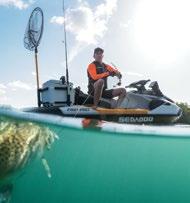










 Jeffery Colley with a fine archery buck
Kyle Sargent has a handful of delicious meals
Jeffery Colley with a fine archery buck
Kyle Sargent has a handful of delicious meals



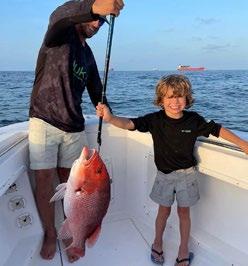 Tucker Bosarge with his 20.5 lb Red Snapper caught off Dauphin Island, Al. His biggest so far.
Hunter Mallette Bass caught with top water plug.
Leah with her really nice buck
Emily Claire Ready (12) from Saraland Alabama with a 200lb, 8 point in Marengo County Ala
Tucker Bosarge with his 20.5 lb Red Snapper caught off Dauphin Island, Al. His biggest so far.
Hunter Mallette Bass caught with top water plug.
Leah with her really nice buck
Emily Claire Ready (12) from Saraland Alabama with a 200lb, 8 point in Marengo County Ala
Send your submission to info@greatdaysoutdoors.com. Submitting a photo does not guarantee that it will be published. We cannot give any guarantees on when a photo will be published.


Please include: child's full name, age, mailing address, and any details. We need to know when, where, size (weight, points, etc.), shot or caught with what and any other meaningful information, like first time, etc.. CONTRIBUTIONS WITHOUT THIS INFO WON’T BE PUBLISHED.

Purge your land of Wild Boar and other pests with the new Photonis Defense Vyper Bino. Hunters, landowners and ranch-hands, the SUPERPOWER advantage is now yours. Thermal does not give you near the resolution that you think you need—the Vyper Bino should be your tool of choice. This System is engineered with high strength resin, making it “rock solid” in extreme environments, under extreme conditions. Our designers have discovered innovative manufacturing processes that give us the ability to offer high-quality night vision systems at affordable prices. The Vyper Bino is a reliable, waterproof tool to take you into the darkest environments and aid you in ridding your land of major pests.

 Thermal VS The New Vyper Binocular Night Vision System
Thermal VS The New Vyper Binocular Night Vision System
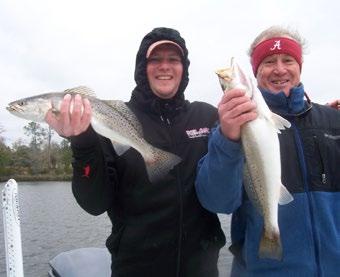 BY CAPT. BOBBY ABRUSCATO
BY CAPT. BOBBY ABRUSCATO

Dress warm and you may want to bring a raincoat. If you are going to go fishing in the winter, be prepared. The weather can be cold and somewhat unpredictable, but pick the right day and location, and the fishing can be very good.
Usually by wintertime, the Mobile-Tensas Delta has been overrun by runoff from upstate rains, but the tidal rivers surrounding Mobile Bay and Mississippi Sound are only affected by local rains. Fish turn on again after a couple of days of big tidal swings.
In the winter, the main target species for most inshore anglers along the northern Gulf Coast is speckled trout. Savvy trout fishermen know to focus on the main river channels during the coldest periods. On the very cold days, soft plastics on a jighead will out produce anything.
It’s important to stay in contact with the bottom since trout will be hovering very near it when the bull fronts come through the area. It usually takes at least a 1/4-ounce jighead to keep the bait down, but keep a 3/8-ounce jighead handy just in case you encounter some strong currents.
A few days after the fronts, try exploring the flats adjacent to the channels. In this case, topwater lures and slow-sinking plugs like Slick Lures and
MirrOlures are the trout killers. If it gets windy, like before a strong front, shrimp imitations fished under a popping cork will also help find the trout. Just drift until you get a bite and figure out a way to stop the boat. Usually you’ll have found a school if you get a bite.
Redfish in the marsh can also provide a fantastic fishing experience for inshore anglers during the winter. Water temperatures seem to have no effect on the feeding habits of redfish. Focus your efforts on the tidal creeks around the area, especially ones that have a shell bottom. Even the most insignificant looking creek mouth can hold hundreds of feeding reds, so don’t overlook them.
Baits of choice again are shrimp imitations under popping corks. For the reds, you’ll have much better success using a scented lure. By far, my favorite is a Gulp! Mantis Shrimp in new penny color. I rig it on a BDS or flutter hook. Non-scented shrimp imitations will catch reds too, but you’ll really want to add some form of scent enhancer like Pro-Cure or FishSticks Lure Enhancer because reds use their sense of smell to the fullest as they forage over a shell bottom.
So don’t put all of your tackle away when it gets cold. The fishing opportunities are there. Just remember to bring your coat! 877.314.1237
Whether you enjoy backcountry expeditions or simple day hunts in unknown territory, sooner or later you’ll find yourself in a situation requiring basic survival skills. In this situation, technology alone cannot bail you out. For instance, I normally take a GPS with me in the field. But once when I got turned around, I discovered I’d lost it. The funny thing is that it beat me home.
Even with all the attention given to safety, I’m still surprised sometimes at how unprepared for trouble a lot of hunters are when they go out. It’s not stupidity, but more a matter of not knowing what to do and making bad decisions. Let me give a few examples of misperceptions common to a lot of us.
For instance, the classic mistake is to get lost, panic, and then take off in any direction in a hurry. It’s as if not knowing where you’re going is all right as long as it’s done quickly.
This seems to derive from a sense of panic. We’ve all heard the phrase, “There’s nothing to fear but fear itself,” but I don’t know about this. I’d rank fear of my buddies finding out I got lost a little higher on my list.
Since getting lost or stranded happens to the best of us eventually, it’s worth taking a moment to review a few basic survival skills.
For starters, being able to build a fire when you really need it can save your life. That’s why I’ve learned proper techniques such as managing draft, finding dry kindling, and always packing a can of Sterno.
An alternative to Sterno is to rapidly rub two sticks together. Even if they never catch fire, you can work up quite a sweat.
After fire, shelter may be your next consideration. The whole point of a shelter is that it keeps you dry and captures heat. Just a word from experience. If you build a lean-to using branches and flammable debris, do not build your fire inside the lean-to. Trust me on this one.
The ability to find water is another key survival skill. Once found, the water needs to be sterilized, typically by boiling. So if you can build a fire, find a creek, fill a pot with water and boil it, you are well prepared to be lost. In such a case, however, hunters that are prepared typically take the extra step of knowing where they are.
Whether you stash them in your fanny pack or jacket, most hunters find a few essentials worth the extra weight. Ask yourself this question, “If you were stranded on a deserted island and could have one thing, what would it be?” For me, the answer is “good barbecue.” That’s because every time I have some, my buddies show up.
I do have a list of essentials that I pack. For instance, when hunting with someone for the first time, I usually pack ear plugs. There’s nothing I hate worse than getting in a jam and having to listen to their incessant whining. Another thing you should always pack is a good map, preferably one of those with a big X that says, “You are here.”
One surprisingly useful survival item is a hat. That’s because the majority of your body heat goes out through your head, and practically all of it does if you’re bald.
Knives are essential in so many ways when you’re stranded. You can whittle wet kindling down to the dry part, cut branches for a leanto, or play mumblety-peg to pass the time while you’re waiting to be rescued.
Perhaps tops on my list of survival items is toilet paper. I pack mine in a plastic bag and use it as a fire starter. Also, I can hang strips on branches to signal rescuers and I find it makes being stranded so much more civilized.
Waterproof matches are nothing more than matches dipped in wax so I make my own. With my last batch, the wax went on a little too heavy, so I have to melt it to light them, which now that I think about it means I already have a fire.
If you spend time searching the internet you can find all sorts of survival gadgets; so many in fact, you might have to be rescued twice just to haul them all out.
I do like those tools that fold into 27 different devices. It’s like having a knife that’s a Transformer. Now all they need to do is invent a rifle that unfolds to make an ATV.
Considering that knowledge is usually more useful than tools, it pays to consider the wisdom that’s been passed from one generation of hunters to the next. This stuff must be useful; otherwise, they wouldn’t still be around to pass it along.
For instance, it’s often said you should never go stumbling around in the dark. This is especially useful considering that’s likely what got you lost to begin with.
Finally, the old woodsmen advise that if you find yourself in a bad situation, before you panic, sit down and assess the mess you’re in. There will be plenty of time to panic later.
Surviving, when you get down to the basics, is essentially a state of mind. Well, that and minding which state you’re in.
JIM MIZE has been lost but apparently found his way out since you can find his books of award-winning humor on Amazon or get autographed copies at www . acreektricklesthroughit .com .


